Shows
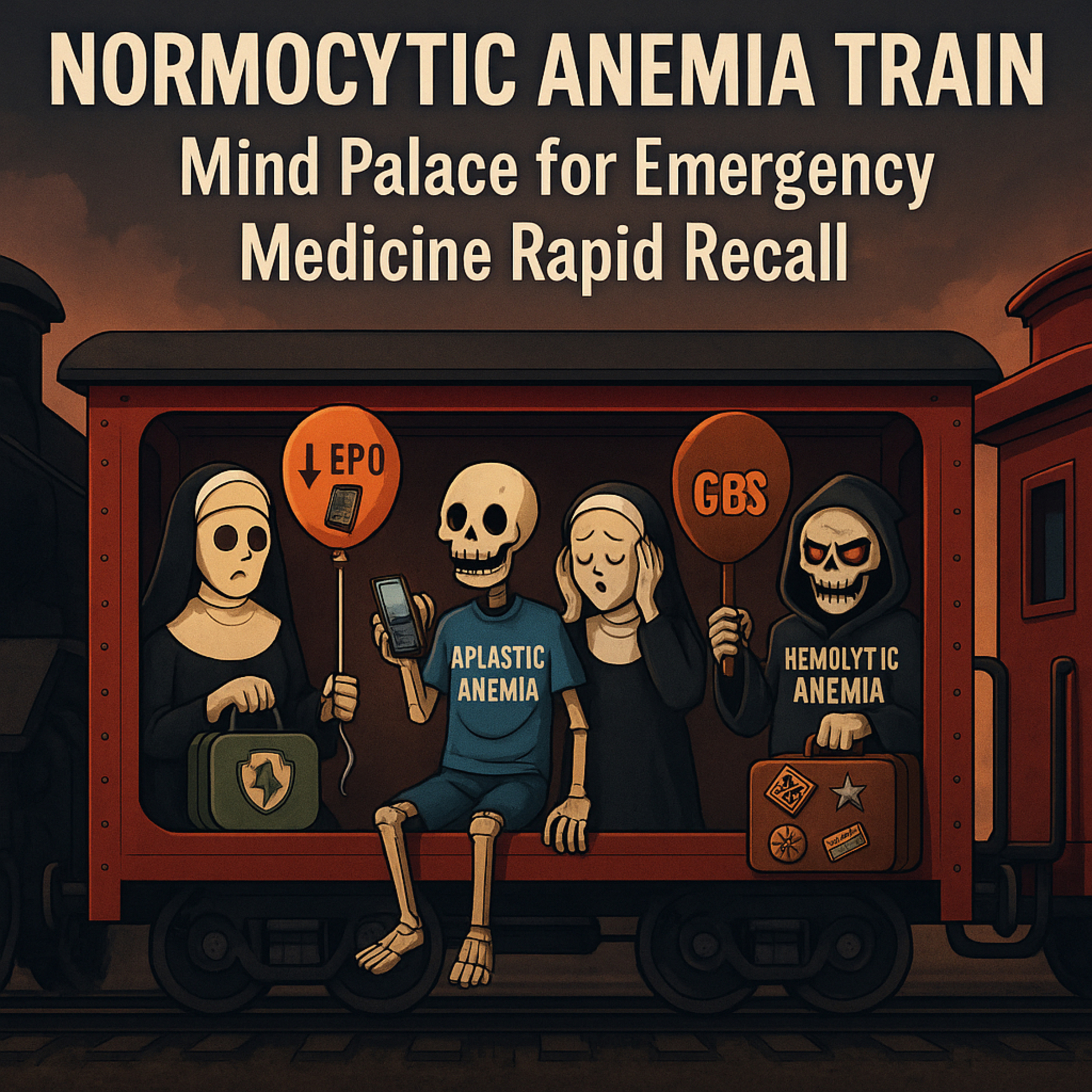 Emergency Medicine MnemonicsNormocytic Anemia Train: Mind Palace for Emergency Medicine Rapid RecallStep aboard the Anemia Train and enter the Normocytic Skeleton Car—the middle car of your anemia mind palace—designed specifically for busy ED clinicians who need fast recall without flipping through textbooks.In this episode, you’ll: • 🧠 Visualize the Normocytic Train Car: Skeleton passengers holding reticulocyte balloons, split by a divider wall between low retic (front) and high retic (back). • 🎈 Lock in Retic Logic for the ED: • Low retic = Hypoproliferative (CKD with low EPO / Aplastic with high EPO but no marrow response) • High retic = Hyperproliferative (Hemolysis vs. Acute...2025-08-011h 14
Emergency Medicine MnemonicsNormocytic Anemia Train: Mind Palace for Emergency Medicine Rapid RecallStep aboard the Anemia Train and enter the Normocytic Skeleton Car—the middle car of your anemia mind palace—designed specifically for busy ED clinicians who need fast recall without flipping through textbooks.In this episode, you’ll: • 🧠 Visualize the Normocytic Train Car: Skeleton passengers holding reticulocyte balloons, split by a divider wall between low retic (front) and high retic (back). • 🎈 Lock in Retic Logic for the ED: • Low retic = Hypoproliferative (CKD with low EPO / Aplastic with high EPO but no marrow response) • High retic = Hyperproliferative (Hemolysis vs. Acute...2025-08-011h 14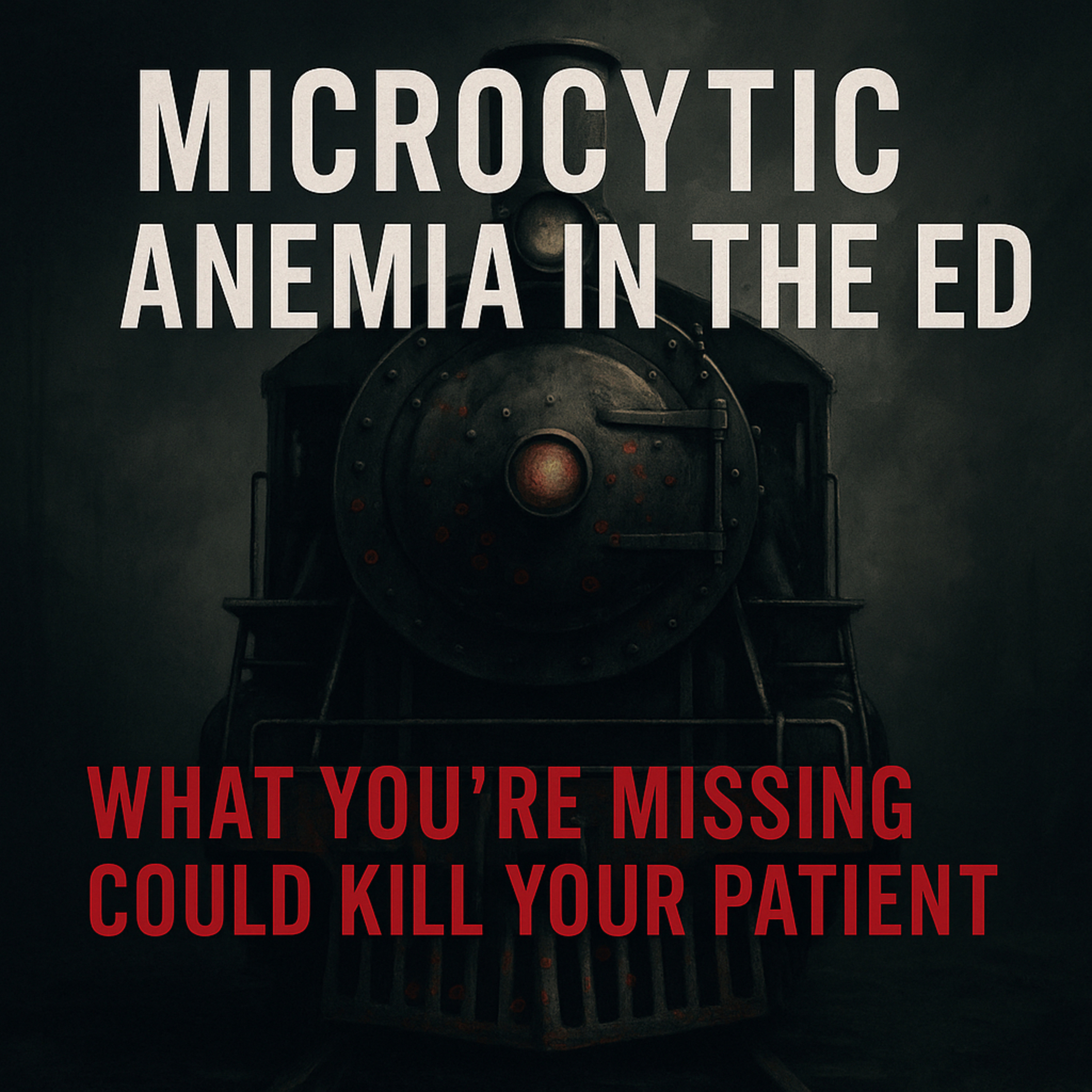 Emergency Medicine MnemonicsMicrocytic Anemia in the ED: What You’re Missing Could Kill Your PatientMicrocytic Anemia in the ED: What You’re Missing Could Kill Your Patient🚨 Episode Summary for the Emergency Clinician:Think you’ve got anemia figured out? Think again. In this high-yield episode, we dissect microcytic anemia from an ED-first perspective and break down what you must recognize and act on fast—because missing a few key clues could mean a delayed diagnosis with deadly consequences.🛤️ Using a train engine metaphor, we bring the microcytic workup to life—making it unforgettable under pressure. This is the engine of ou...2025-07-3153 min
Emergency Medicine MnemonicsMicrocytic Anemia in the ED: What You’re Missing Could Kill Your PatientMicrocytic Anemia in the ED: What You’re Missing Could Kill Your Patient🚨 Episode Summary for the Emergency Clinician:Think you’ve got anemia figured out? Think again. In this high-yield episode, we dissect microcytic anemia from an ED-first perspective and break down what you must recognize and act on fast—because missing a few key clues could mean a delayed diagnosis with deadly consequences.🛤️ Using a train engine metaphor, we bring the microcytic workup to life—making it unforgettable under pressure. This is the engine of ou...2025-07-3153 min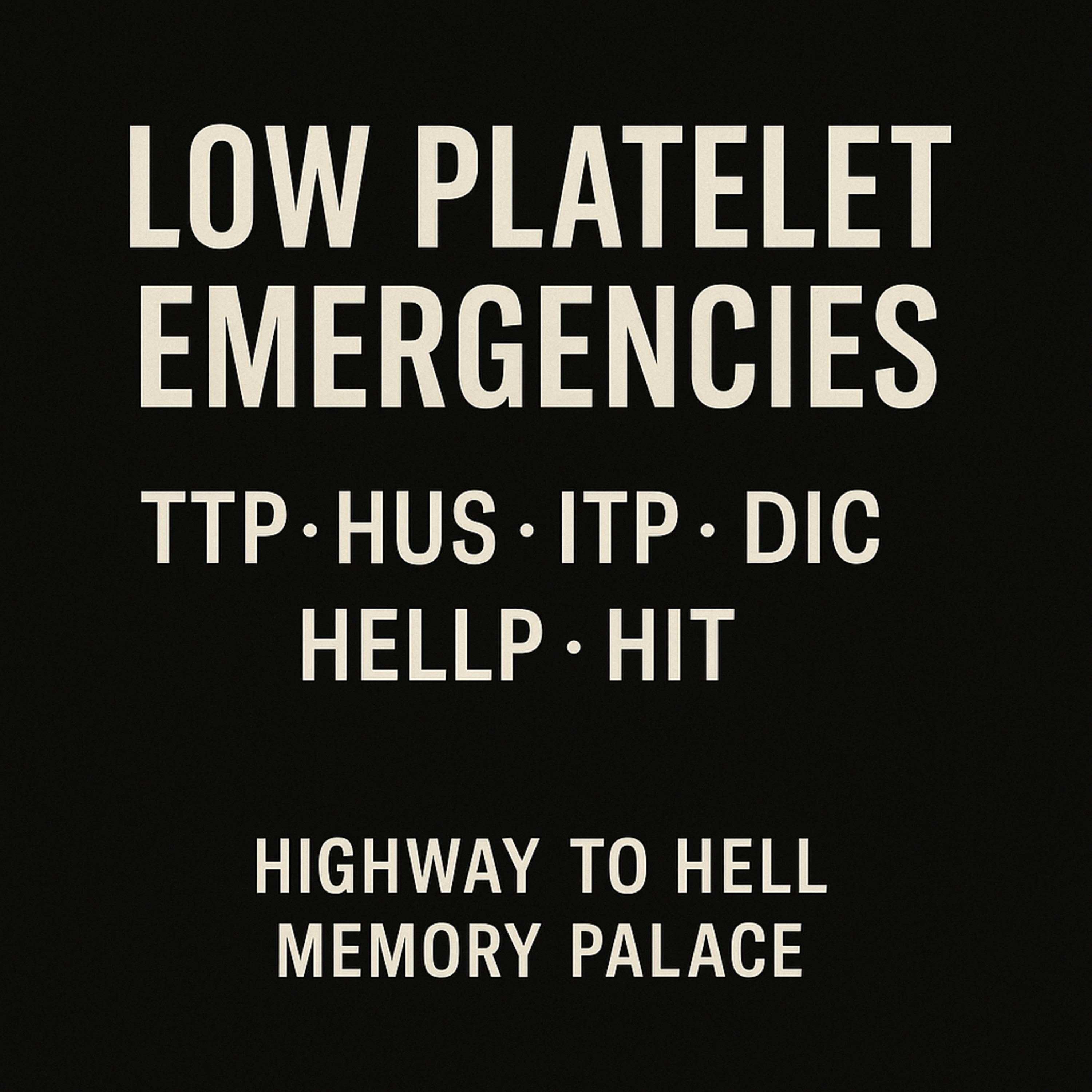 Emergency Medicine MnemonicsLow Platelet Emergencies: TTP, HUS, ITP, DIC, HELLP, HIT thrombocytopenia memory palaceIn this high-yield episode, we build a visual memory palace down the “Highway to Hell” of emergency thrombocytopenia syndromes. Each stop reveals a unique and dangerous cause of low platelets you’ll encounter in the ED—brought to life through vivid storytelling, unforgettable characters, and layered mnemonics.🚑 What You’ll Learn (Quick Hits): • TTP – Thrombotic Thrombocytopenic Purpura⚠️ Medical emergency! Think fever, renal failure, confusion, and schistocytes. LDH ↑, haptoglobin ↓. No platelets? No transfusions—start plasma exchange. • HUS – Hemolytic Uremic Syndrome👶 Usually in kids post-E. coli O157:H7 diarrhea. Watch for MAHA, AKI, and...2025-07-241h 07
Emergency Medicine MnemonicsLow Platelet Emergencies: TTP, HUS, ITP, DIC, HELLP, HIT thrombocytopenia memory palaceIn this high-yield episode, we build a visual memory palace down the “Highway to Hell” of emergency thrombocytopenia syndromes. Each stop reveals a unique and dangerous cause of low platelets you’ll encounter in the ED—brought to life through vivid storytelling, unforgettable characters, and layered mnemonics.🚑 What You’ll Learn (Quick Hits): • TTP – Thrombotic Thrombocytopenic Purpura⚠️ Medical emergency! Think fever, renal failure, confusion, and schistocytes. LDH ↑, haptoglobin ↓. No platelets? No transfusions—start plasma exchange. • HUS – Hemolytic Uremic Syndrome👶 Usually in kids post-E. coli O157:H7 diarrhea. Watch for MAHA, AKI, and...2025-07-241h 07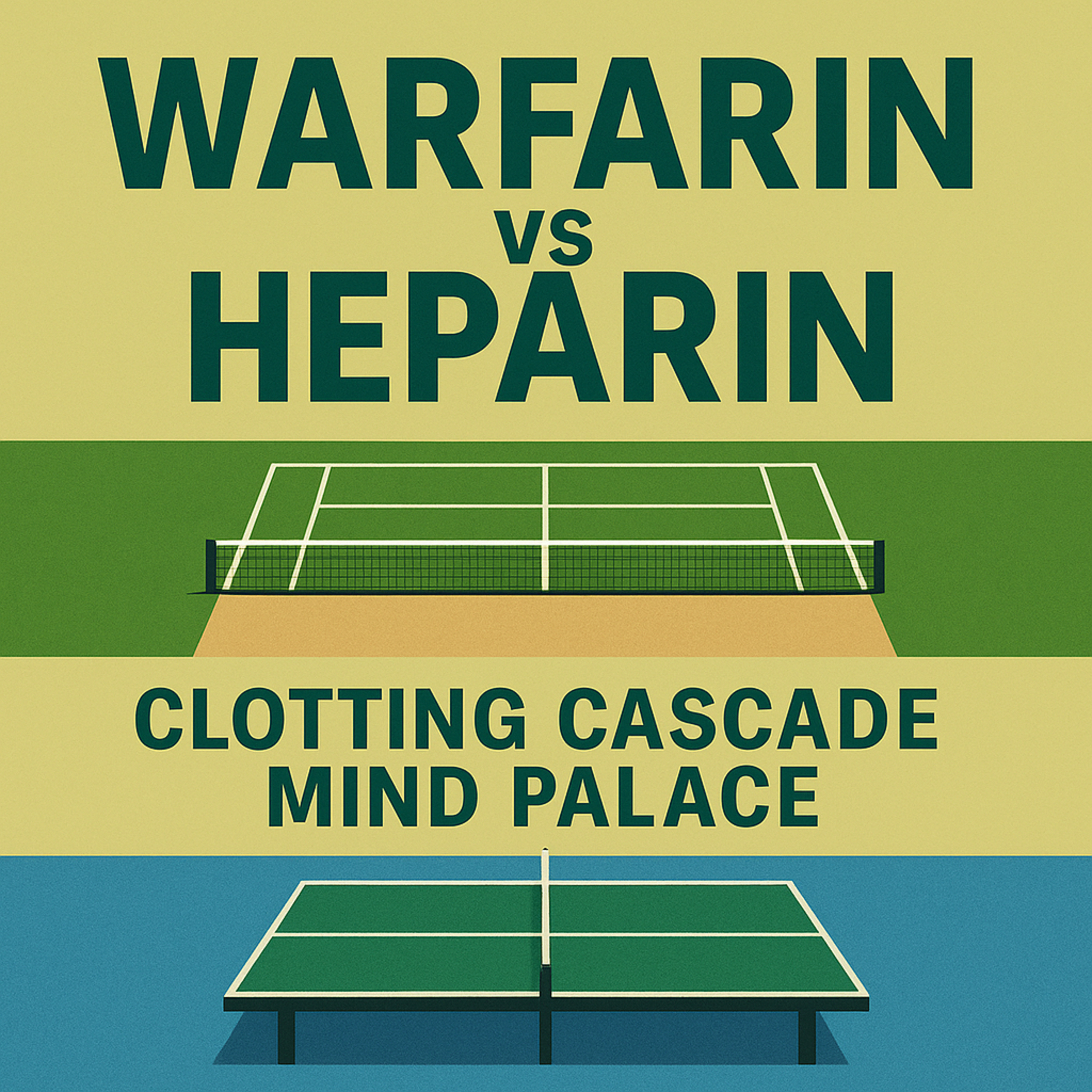 Emergency Medicine MnemonicsWarfarin vs Heparin: The Clotting Cascade Mind Palace for EM Docs (PT, PTT & TPA Simplified)In this unforgettable bloody podcast, we bring the clotting cascade to life through a cast of hilarious and high-yield characters designed to make clinical recall effortless under pressure.Play Table Tennis = PTT = Inside = Intrinsic. Play Tennis = PT = Outside = Extrinsic.”You’ll meet:🟢 Lucky Number 7 — our tennis-playing war cry–shouting Factor VII who kicks off the extrinsic pathway by yelling “This is WAR!” 🎾 Warfarin is his signature drug, and he’s monitored using PT/INR. 🔵 Inside, we find our Intrinsic Table Ten...2025-07-161h 01
Emergency Medicine MnemonicsWarfarin vs Heparin: The Clotting Cascade Mind Palace for EM Docs (PT, PTT & TPA Simplified)In this unforgettable bloody podcast, we bring the clotting cascade to life through a cast of hilarious and high-yield characters designed to make clinical recall effortless under pressure.Play Table Tennis = PTT = Inside = Intrinsic. Play Tennis = PT = Outside = Extrinsic.”You’ll meet:🟢 Lucky Number 7 — our tennis-playing war cry–shouting Factor VII who kicks off the extrinsic pathway by yelling “This is WAR!” 🎾 Warfarin is his signature drug, and he’s monitored using PT/INR. 🔵 Inside, we find our Intrinsic Table Ten...2025-07-161h 01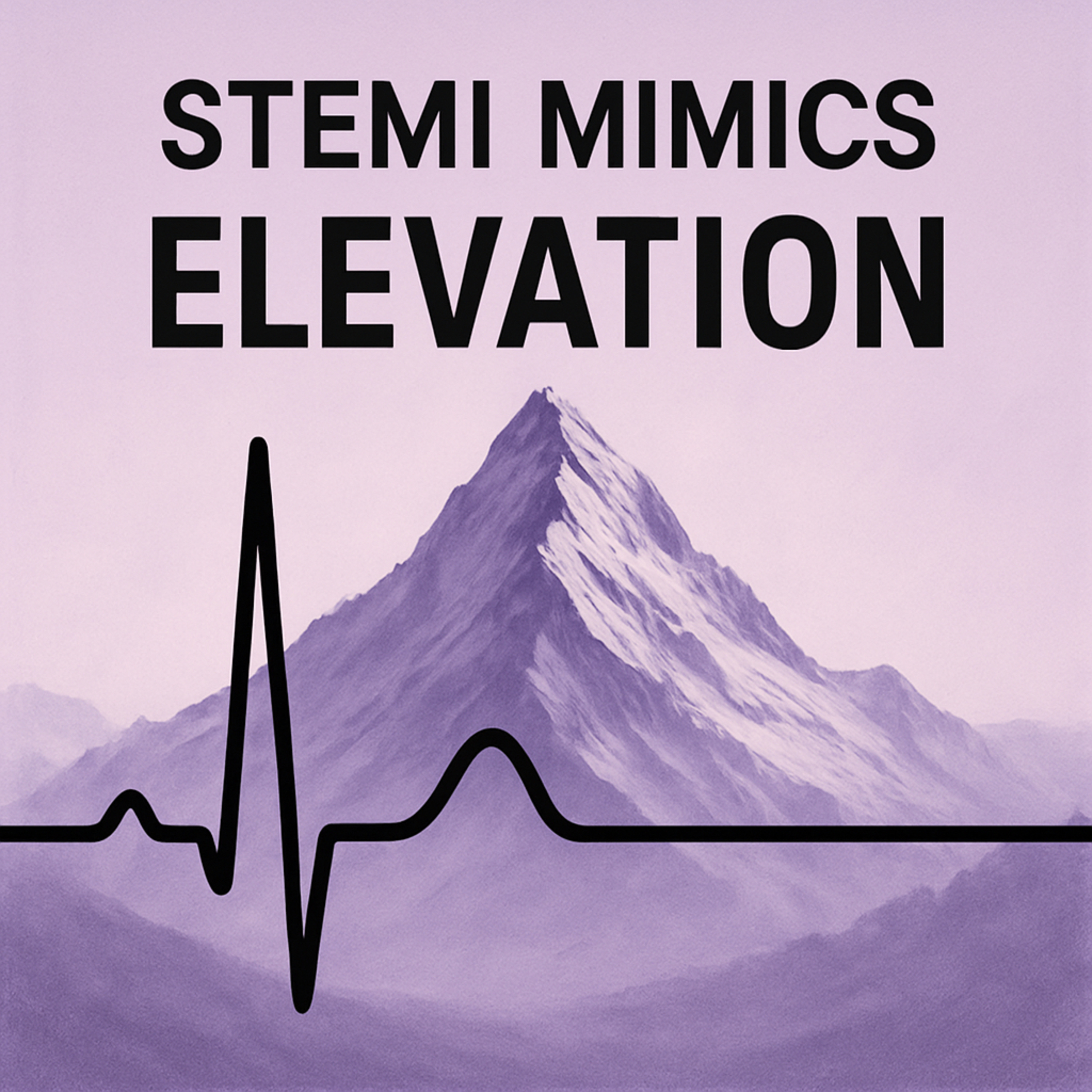 Emergency Medicine MnemonicsSTEMI Mimics: Elevation mnemonicIn this episode, we tackle STEMI mimics—conditions that mimic ST-segment elevation myocardial infarction on an EKG but aren’t always a heart attack. Why’s it critical? Because ST elevation doesn’t always mean STEMI, and misdiagnosis can waste time or miss critical conditions. ELEVATIONElectrolytes (Hyperkalemia), Left Bundle Branch Block, Early Repolarization, Ventricular Hypertrophy (Left), Aneurysm (Ventricular), Thailand (Brugada Syndrome), Inflammation (Pericarditis), Osborn J Wave, Non-Ischemic Vasospas...2025-07-1033 min
Emergency Medicine MnemonicsSTEMI Mimics: Elevation mnemonicIn this episode, we tackle STEMI mimics—conditions that mimic ST-segment elevation myocardial infarction on an EKG but aren’t always a heart attack. Why’s it critical? Because ST elevation doesn’t always mean STEMI, and misdiagnosis can waste time or miss critical conditions. ELEVATIONElectrolytes (Hyperkalemia), Left Bundle Branch Block, Early Repolarization, Ventricular Hypertrophy (Left), Aneurysm (Ventricular), Thailand (Brugada Syndrome), Inflammation (Pericarditis), Osborn J Wave, Non-Ischemic Vasospas...2025-07-1033 min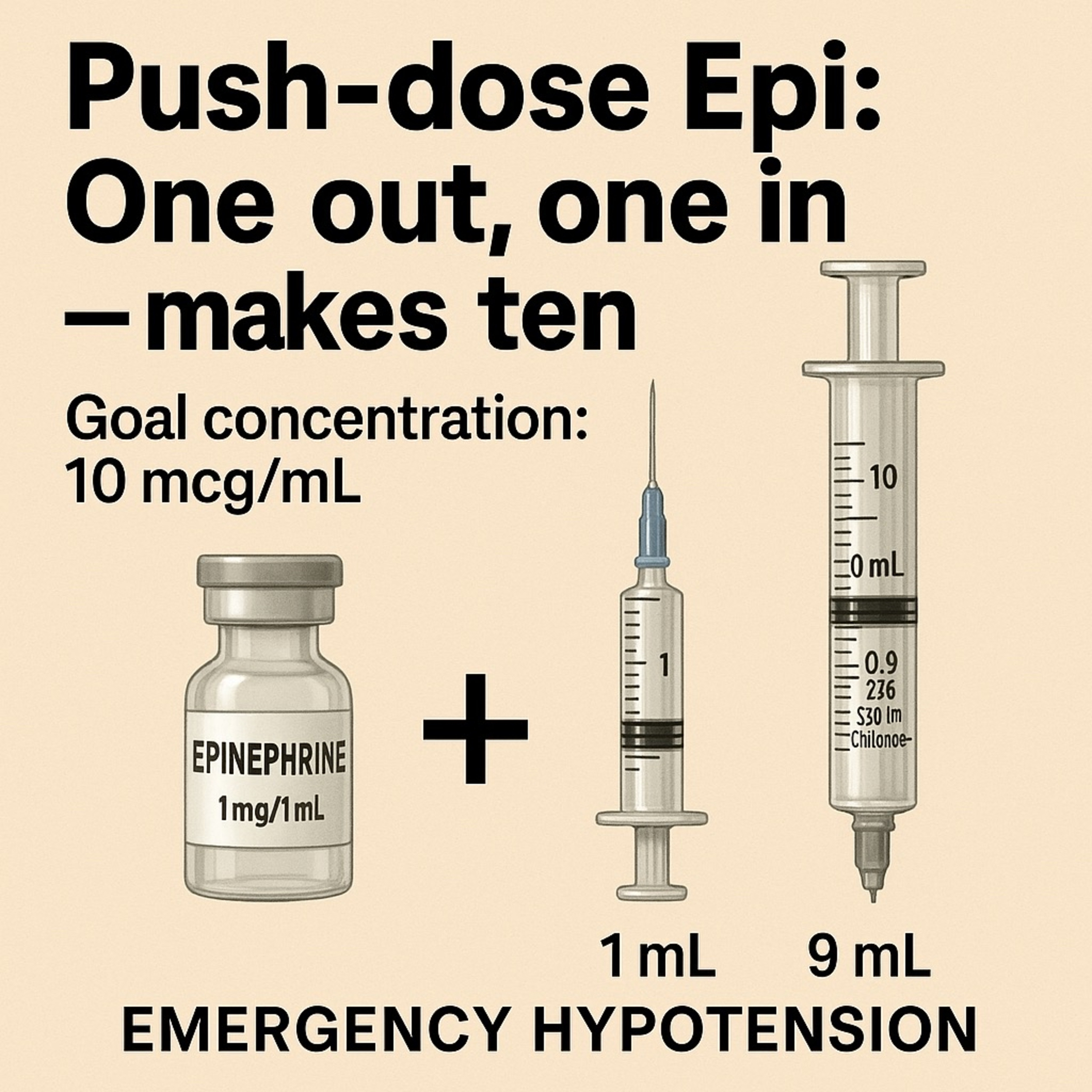 Emergency Medicine MnemonicsPush-dose Epi: One out, One in - Makes 10How to Mix Push-dose Epi: One out, one in — makes tenGoal concentration: 10 mcg/mLStep-by-Step Mixing: 1. Start with a 10 mL syringe of normal saline (NS) • empty 1 mL to retain 9 mL of NS in the syringe. 2. Use the code cart 1:10,000 epi (100 mcg/mL) • This is the standard “cardiac arrest epi” amp (usually 1 mg in 10 mL)…the 1:10,000 prefilled syringe used during ACLS 3. Withdraw 1 mL of the 1:10,000 epi (this gives you 100 mcg) using 3 mL syringe. 4. Inject that 1 mL (100 mcg) into your sy...2025-06-1723 min
Emergency Medicine MnemonicsPush-dose Epi: One out, One in - Makes 10How to Mix Push-dose Epi: One out, one in — makes tenGoal concentration: 10 mcg/mLStep-by-Step Mixing: 1. Start with a 10 mL syringe of normal saline (NS) • empty 1 mL to retain 9 mL of NS in the syringe. 2. Use the code cart 1:10,000 epi (100 mcg/mL) • This is the standard “cardiac arrest epi” amp (usually 1 mg in 10 mL)…the 1:10,000 prefilled syringe used during ACLS 3. Withdraw 1 mL of the 1:10,000 epi (this gives you 100 mcg) using 3 mL syringe. 4. Inject that 1 mL (100 mcg) into your sy...2025-06-1723 min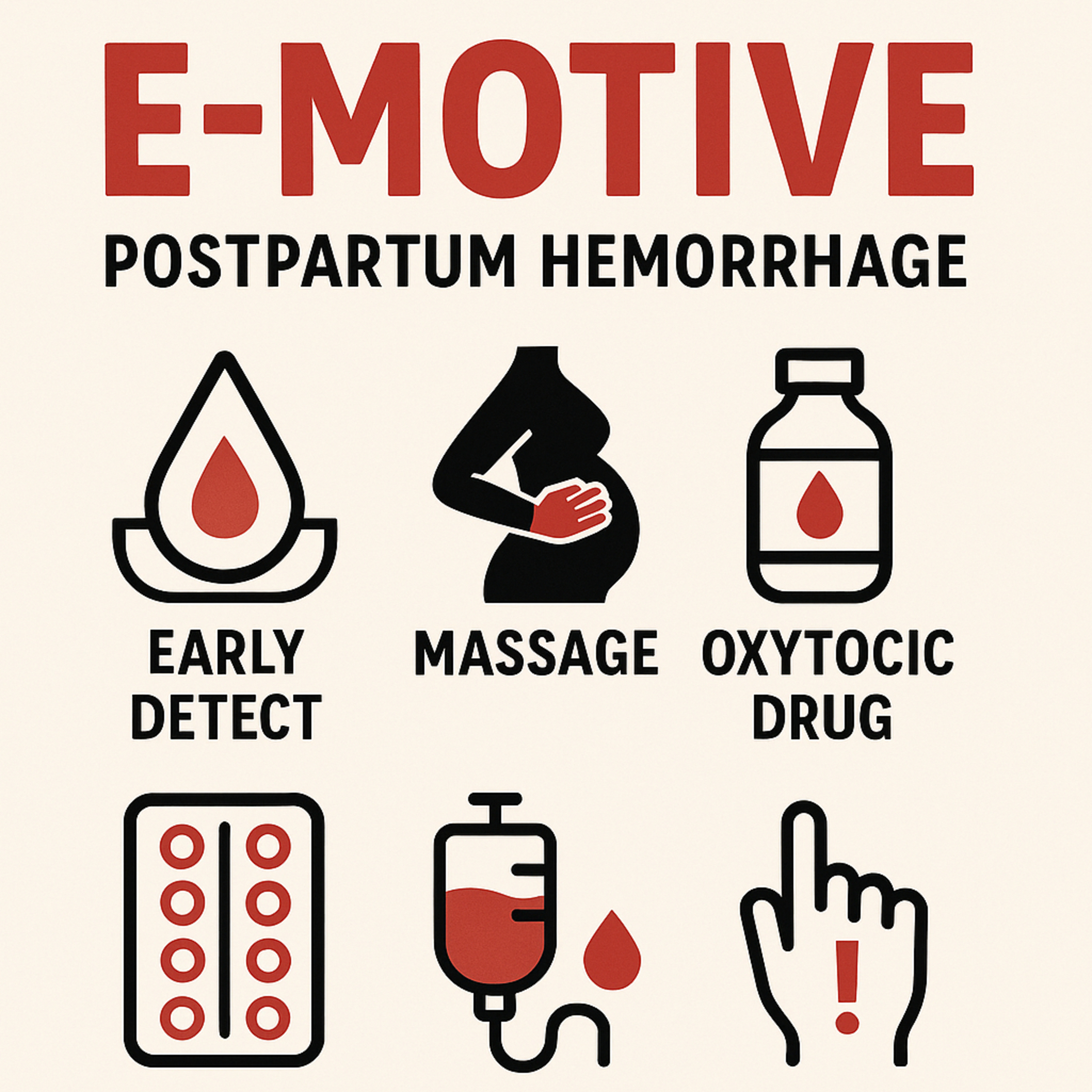 Emergency Medicine MnemonicsPostpartum Hemorrhage: E-MOTIVEE-MOTIVE Mnemonic for Postpartum Hemorrhage: A Lifesaving StrategyThe E-MOTIVE mnemonic stands for a six-component bundle aimed at tackling postpartum hemorrhage (PPH), a major cause of maternal death, especially in low-resource settings. This approach, tested in a cluster-randomized trial across 80 hospitals in Kenya, Nigeria, South Africa, and Tanzania, was published in the New England Journal of Medicine in 2023. Here’s what E-MOTIVE stands for and why it matters: • E – Early Detection: Uses a calibrated blood-collection drape to objectively measure blood loss after vaginal delivery. This ensures PPH (blood loss ≥500 ml) is identified quickly...2025-05-1525 min
Emergency Medicine MnemonicsPostpartum Hemorrhage: E-MOTIVEE-MOTIVE Mnemonic for Postpartum Hemorrhage: A Lifesaving StrategyThe E-MOTIVE mnemonic stands for a six-component bundle aimed at tackling postpartum hemorrhage (PPH), a major cause of maternal death, especially in low-resource settings. This approach, tested in a cluster-randomized trial across 80 hospitals in Kenya, Nigeria, South Africa, and Tanzania, was published in the New England Journal of Medicine in 2023. Here’s what E-MOTIVE stands for and why it matters: • E – Early Detection: Uses a calibrated blood-collection drape to objectively measure blood loss after vaginal delivery. This ensures PPH (blood loss ≥500 ml) is identified quickly...2025-05-1525 min Emergency Medicine MnemonicsNeonatal Resuscitation Algorithm flowchart: NRPThis is a Neonatal Resuscitation Algorithm flowchart, specifically the NRP (Neonatal Resuscitation Program), published by the AHA in 2020. It provides a step-by-step guide for healthcare providers to follow during the resuscitation of a newborn immediately after birth, focusing on stabilizing the infant’s breathing, heart rate, and oxygenation.Starting Point • Antenatal Counseling and Team Briefing: Before birth, the team prepares and checks equipment. • Birth: The process begins at the moment of birth.Initial Assessment (Within the First Minute) 1 Term Gestation? Good Tone? Breathing or Crying? ◦ I...2025-05-1518 min
Emergency Medicine MnemonicsNeonatal Resuscitation Algorithm flowchart: NRPThis is a Neonatal Resuscitation Algorithm flowchart, specifically the NRP (Neonatal Resuscitation Program), published by the AHA in 2020. It provides a step-by-step guide for healthcare providers to follow during the resuscitation of a newborn immediately after birth, focusing on stabilizing the infant’s breathing, heart rate, and oxygenation.Starting Point • Antenatal Counseling and Team Briefing: Before birth, the team prepares and checks equipment. • Birth: The process begins at the moment of birth.Initial Assessment (Within the First Minute) 1 Term Gestation? Good Tone? Breathing or Crying? ◦ I...2025-05-1518 min Emergency Medicine MnemonicsHyperkalemia: STABILIZE, SHIFT, SEND-IT (I C BIG K DROP)The 3-Step Approach to Acute Hyperkalemia 1. Stabilize: the Heart (If ECG changes) → Calcium 2. Shift: K+ Into Cells → Insulin + Glucose, Albuterol, Bicarb (if acidotic) 3. Send-it: Remove K+ From Body → Diuretics (if making urine), Kayexalate (if GI motility intact), Dialysis (if severe/refractory)I – IV FluidsC – CalciumB – Beta-2 AgonistsB – BicarbonateI – Insulin & GlucoseK – Kayexalate (Sodium Polystyrene Sulfonate)D – DiureticsD – Dialysis1. First S...2025-03-1127 min
Emergency Medicine MnemonicsHyperkalemia: STABILIZE, SHIFT, SEND-IT (I C BIG K DROP)The 3-Step Approach to Acute Hyperkalemia 1. Stabilize: the Heart (If ECG changes) → Calcium 2. Shift: K+ Into Cells → Insulin + Glucose, Albuterol, Bicarb (if acidotic) 3. Send-it: Remove K+ From Body → Diuretics (if making urine), Kayexalate (if GI motility intact), Dialysis (if severe/refractory)I – IV FluidsC – CalciumB – Beta-2 AgonistsB – BicarbonateI – Insulin & GlucoseK – Kayexalate (Sodium Polystyrene Sulfonate)D – DiureticsD – Dialysis1. First S...2025-03-1127 min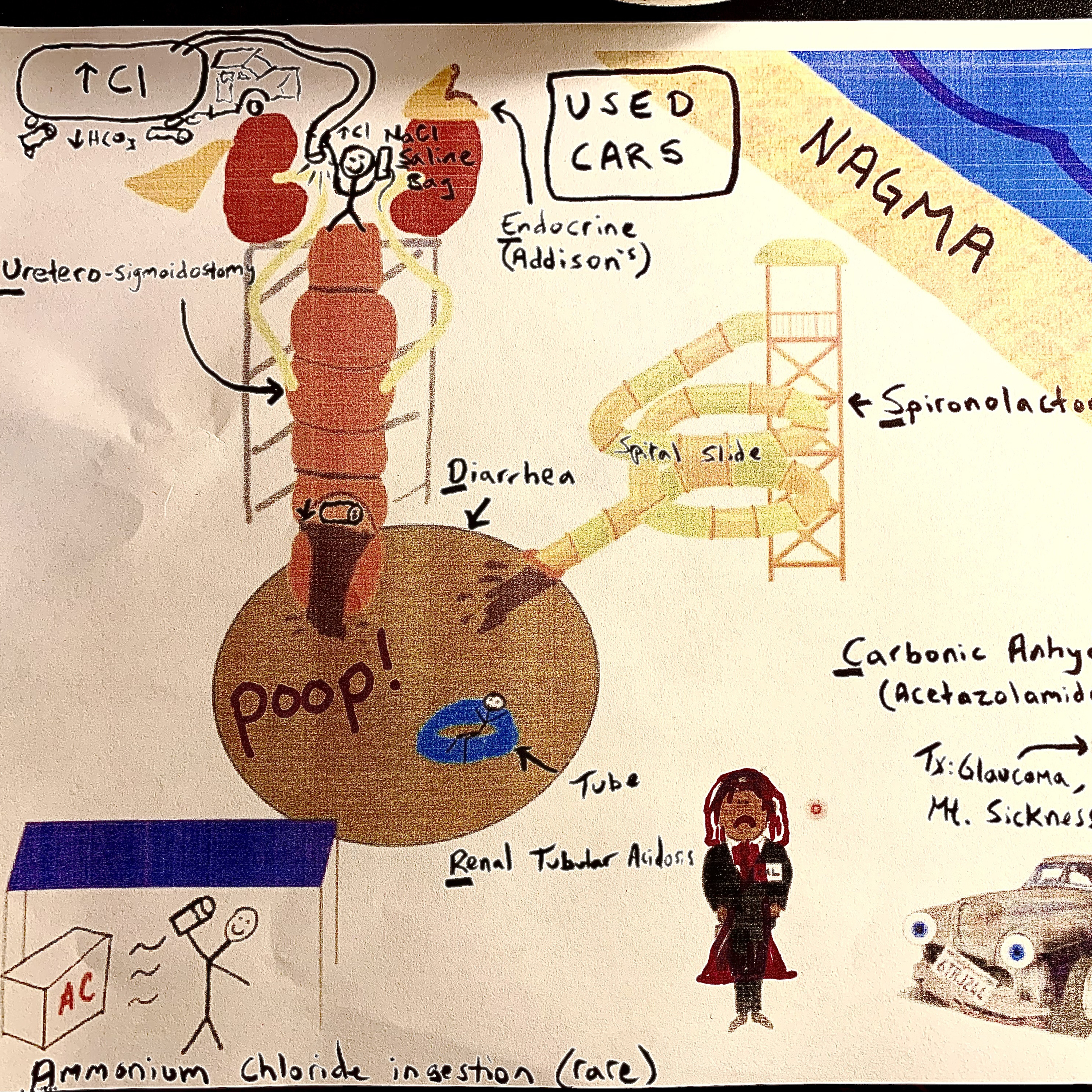 Emergency Medicine MnemonicsUSED CARS non-anion gap metabolic acidosis: high chloride low bicarbonateUSED CARS mnemonic for non-anion gap metabolic acidosis (NAGMA):Why “USED CARS”? • Ureterosigmoidostomy • Saline & Chloride infusion (excessive).. chloride offsets AG • Endocrine disorders (Addison’s disease aka adrenal insufficiency, hypoaldosteronism) • Diarrhea • Carbonic anhydrase inhibitors • Ammonium chloride • Renal tubular acidosis • Spironolactone⸻U – Ureteroenteric fistula (or diversion surgery) • Why NAGMA? • Ureter attached directly to colon; bicarbonate lost into bowel, chloride absorbed, causing hyperchloremic acidosis. • Symptoms: • History of bladder/colon...2025-03-0648 min
Emergency Medicine MnemonicsUSED CARS non-anion gap metabolic acidosis: high chloride low bicarbonateUSED CARS mnemonic for non-anion gap metabolic acidosis (NAGMA):Why “USED CARS”? • Ureterosigmoidostomy • Saline & Chloride infusion (excessive).. chloride offsets AG • Endocrine disorders (Addison’s disease aka adrenal insufficiency, hypoaldosteronism) • Diarrhea • Carbonic anhydrase inhibitors • Ammonium chloride • Renal tubular acidosis • Spironolactone⸻U – Ureteroenteric fistula (or diversion surgery) • Why NAGMA? • Ureter attached directly to colon; bicarbonate lost into bowel, chloride absorbed, causing hyperchloremic acidosis. • Symptoms: • History of bladder/colon...2025-03-0648 min Emergency Medicine MnemonicsGOLD MARK (better than MUDPILES): Anion Gap Metabolic Acidosis Mnemonic The GOLD MARK causes are divided into three major pathophysiologic groups based on the source of the acid production:1. Alcohols (Toxic Ingestions) → Emergency Toxins • Glycols → Ethylene glycol (antifreeze) and propylene glycol • Methanol → Windshield washer fluid, homemade alcohol substitutes • Why grouped together? • Common in suicide attempts, accidental ingestions, or chronic alcoholics. • Key labs: Serum osmolality, anion gap, osmolar gap. • Imaging: Calcium oxalate crystals on urine microscopy (ethylene glycol). • Treatment: Fomepizole or ethanol (blocks alcohol dehydrogenase), hemodialysis in severe cases....2025-03-061h 02
Emergency Medicine MnemonicsGOLD MARK (better than MUDPILES): Anion Gap Metabolic Acidosis Mnemonic The GOLD MARK causes are divided into three major pathophysiologic groups based on the source of the acid production:1. Alcohols (Toxic Ingestions) → Emergency Toxins • Glycols → Ethylene glycol (antifreeze) and propylene glycol • Methanol → Windshield washer fluid, homemade alcohol substitutes • Why grouped together? • Common in suicide attempts, accidental ingestions, or chronic alcoholics. • Key labs: Serum osmolality, anion gap, osmolar gap. • Imaging: Calcium oxalate crystals on urine microscopy (ethylene glycol). • Treatment: Fomepizole or ethanol (blocks alcohol dehydrogenase), hemodialysis in severe cases....2025-03-061h 02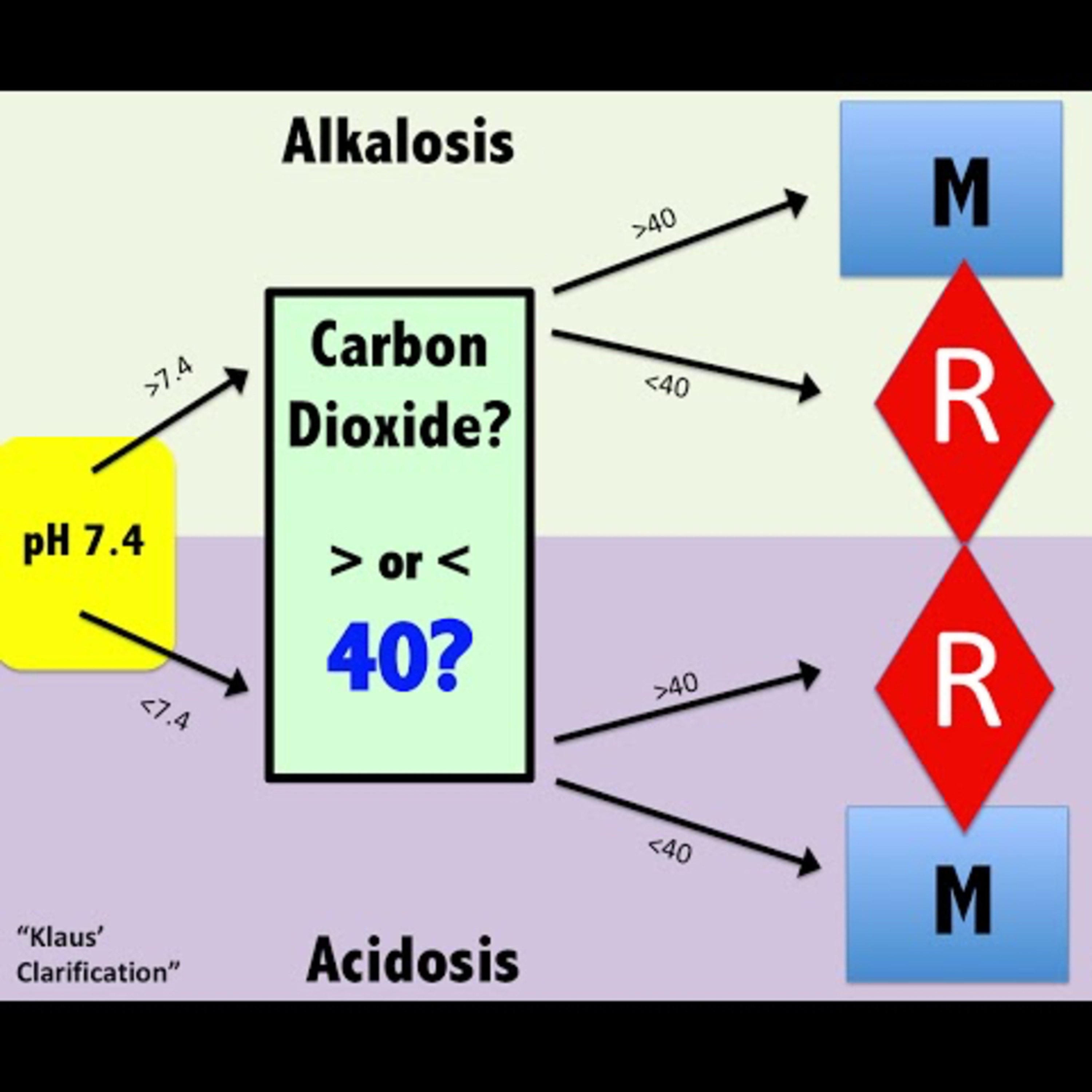 Emergency Medicine MnemonicsBlood Gases Flow Chart: MR RMMister Ronald McDonald (MR RM) is a helpful flowchart for interpreting acid-base disorders, specifically for determining whether a patient’s condition is due to a metabolic (M) or respiratory (R) cause:1. Check the pH (7.4 is the cutoff) • pH > 7.4 → Alkalosis • pH < >2. Assess Carbon Dioxide (CO₂) Levels (PaCO₂) • The key threshold is 40 mmHg: • If CO₂ > 40 mmHg, this suggests respiratory acidosis or metabolic alkalosis. • If CO₂ < >3. Determine the Cause • In Alkalosis: • If CO₂ > 40, the cause is Metabolic (M) Alkalosis.2025-02-1333 min
Emergency Medicine MnemonicsBlood Gases Flow Chart: MR RMMister Ronald McDonald (MR RM) is a helpful flowchart for interpreting acid-base disorders, specifically for determining whether a patient’s condition is due to a metabolic (M) or respiratory (R) cause:1. Check the pH (7.4 is the cutoff) • pH > 7.4 → Alkalosis • pH < >2. Assess Carbon Dioxide (CO₂) Levels (PaCO₂) • The key threshold is 40 mmHg: • If CO₂ > 40 mmHg, this suggests respiratory acidosis or metabolic alkalosis. • If CO₂ < >3. Determine the Cause • In Alkalosis: • If CO₂ > 40, the cause is Metabolic (M) Alkalosis.2025-02-1333 min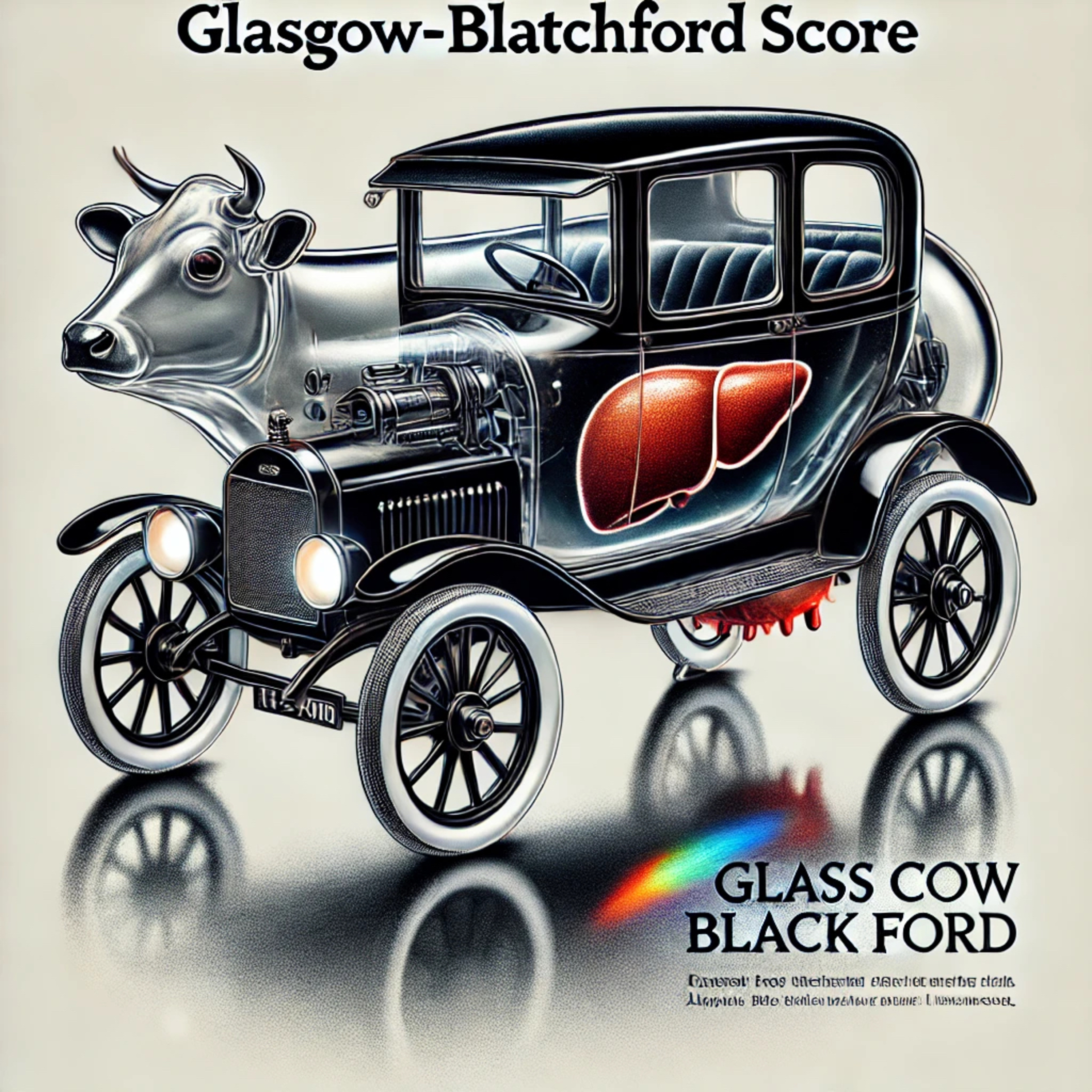 Emergency Medicine MnemonicsGlasgow-Blatchford Score (Glass Cow Black Ford): Upper GI Bleed indications for hospital admissionTo determine if the patient requires admission or can be discharged, the Glasgow-Blatchford Score (GBS) is used. Here’s the ABCDEF mnemonic and why these factors increase the risk of an upper GI bleed: A - Active: Conditions like syncope or melena indicate ongoing or significant bleeding, increasing risk severity. B - Blood Urea Nitrogen: Levels ≥ 7 mg/dL suggest impaired kidney function, which is often associated with poor systemic clearance and bleeding risk. C - Circulation: A systolic blood pressure ≥ 110 mm Hg may reflect hemodynamic...2024-10-2917 min
Emergency Medicine MnemonicsGlasgow-Blatchford Score (Glass Cow Black Ford): Upper GI Bleed indications for hospital admissionTo determine if the patient requires admission or can be discharged, the Glasgow-Blatchford Score (GBS) is used. Here’s the ABCDEF mnemonic and why these factors increase the risk of an upper GI bleed: A - Active: Conditions like syncope or melena indicate ongoing or significant bleeding, increasing risk severity. B - Blood Urea Nitrogen: Levels ≥ 7 mg/dL suggest impaired kidney function, which is often associated with poor systemic clearance and bleeding risk. C - Circulation: A systolic blood pressure ≥ 110 mm Hg may reflect hemodynamic...2024-10-2917 min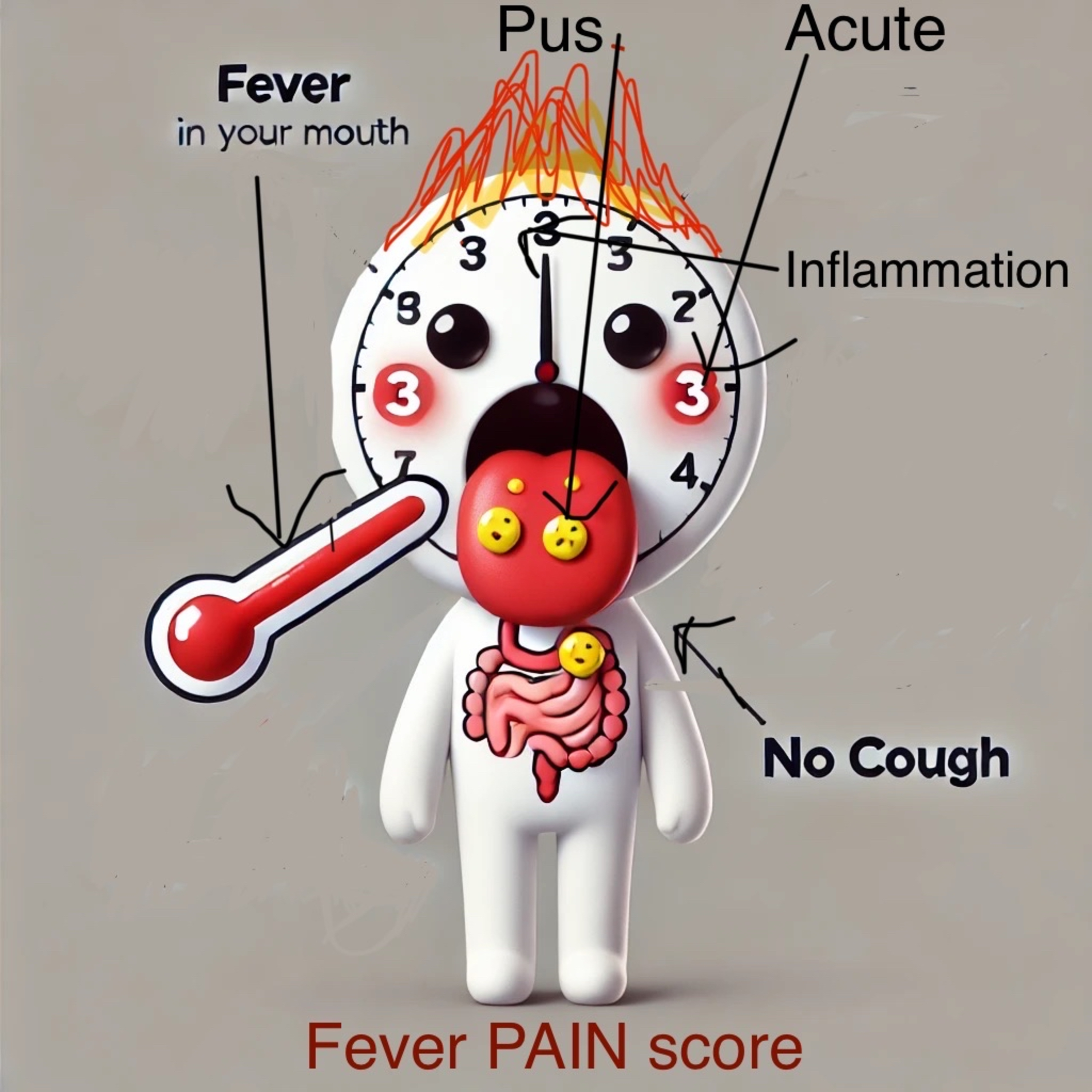 Emergency Medicine MnemonicsCENTOR criteria Fever PAIN: Strep Throat mnemonicCENTOR criteria Fever PAIN: Strep Throat mnemonic2024-10-2416 min
Emergency Medicine MnemonicsCENTOR criteria Fever PAIN: Strep Throat mnemonicCENTOR criteria Fever PAIN: Strep Throat mnemonic2024-10-2416 min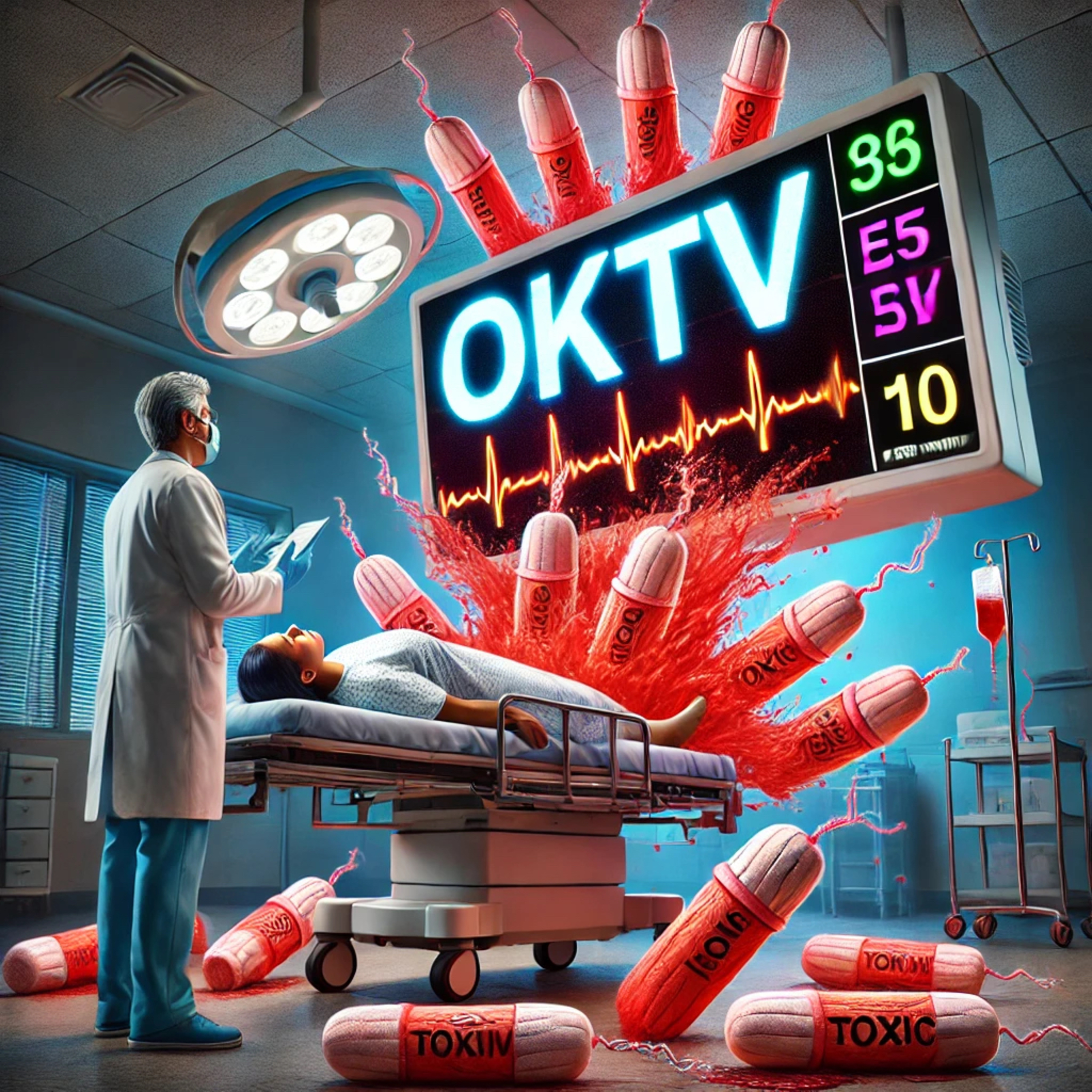 Emergency Medicine MnemonicsH’s and T’s mnemonic: OKTV, THROW TEN TOXIC TAMPONSThe “H’s and T’s” refer to a mnemonic used in medicine to help healthcare professionals quickly recall the most common causes of cardiac arrest during a code (a medical emergency requiring CPR). Memorizing these is crucial because identifying and addressing these causes rapidly can improve the chances of saving a patient’s life. Here’s a breakdown:The H’s: OK TVHypoxia - Lack of oxygen to tissues can lead to a heart stopping, so ensuring proper oxygenation is key.Hypo-/Hyperk...2024-10-0707 min
Emergency Medicine MnemonicsH’s and T’s mnemonic: OKTV, THROW TEN TOXIC TAMPONSThe “H’s and T’s” refer to a mnemonic used in medicine to help healthcare professionals quickly recall the most common causes of cardiac arrest during a code (a medical emergency requiring CPR). Memorizing these is crucial because identifying and addressing these causes rapidly can improve the chances of saving a patient’s life. Here’s a breakdown:The H’s: OK TVHypoxia - Lack of oxygen to tissues can lead to a heart stopping, so ensuring proper oxygenation is key.Hypo-/Hyperk...2024-10-0707 min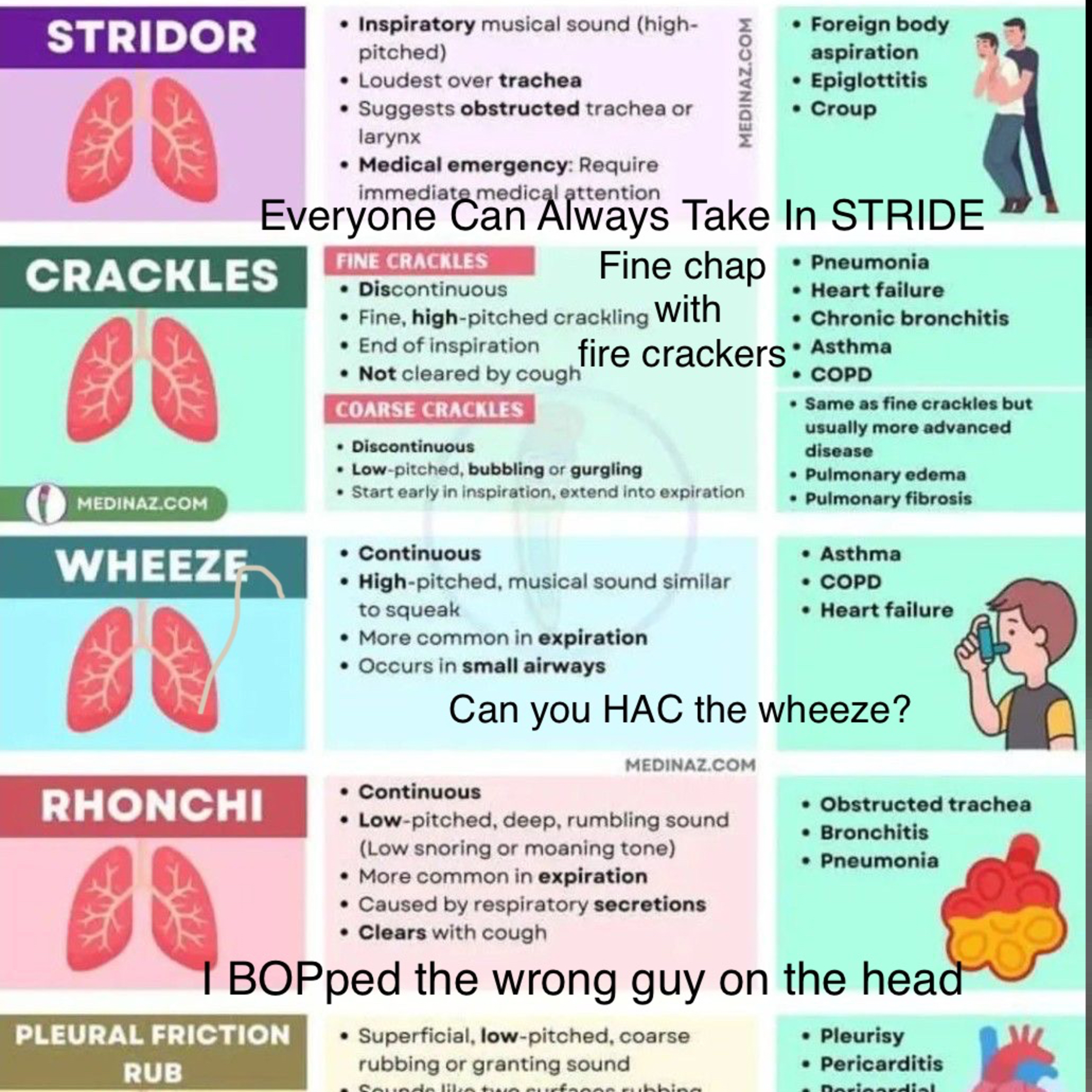 Emergency Medicine MnemonicsAdventitious Lung Sounds: Everyone Can Always take in STRIDE, Fine CCHAP with fire crackersThese are the adventitious lung sounds Mneumonics.Strider:Everyone can take in stride.Crackles:A fine chap with firecrackers.Wheezing:Just ask any whale: Can you HAC the wheeze? Rhonchi:I BOPped the wrong guyPlural friction rub: PPP (3 words 3 P’s)2024-10-0324 min
Emergency Medicine MnemonicsAdventitious Lung Sounds: Everyone Can Always take in STRIDE, Fine CCHAP with fire crackersThese are the adventitious lung sounds Mneumonics.Strider:Everyone can take in stride.Crackles:A fine chap with firecrackers.Wheezing:Just ask any whale: Can you HAC the wheeze? Rhonchi:I BOPped the wrong guyPlural friction rub: PPP (3 words 3 P’s)2024-10-0324 min Emergency Medicine MnemonicsKEEP: UTI organisms & antibiotic treatment mnemonic (I KEEP getting UTIs)The “KEEP” mnemonic is a tool to remember the most common organisms causing urinary tract infections (UTIs). Here’s how the mnemonic breaks down, followed by key information relevant for emergency medicine boards:K - Klebsiella species • Relevance: Klebsiella is the second most common organism causing UTIs, especially hospital-acquired infections. • Key Points: • Gram-negative rod. • Often seen in patients with underlying conditions like diabetes, or those with urinary catheters. • Resistant to many antibiotics, so susceptibility testing is important. • Treatment Options: Cephalosporins (li...2024-10-0217 min
Emergency Medicine MnemonicsKEEP: UTI organisms & antibiotic treatment mnemonic (I KEEP getting UTIs)The “KEEP” mnemonic is a tool to remember the most common organisms causing urinary tract infections (UTIs). Here’s how the mnemonic breaks down, followed by key information relevant for emergency medicine boards:K - Klebsiella species • Relevance: Klebsiella is the second most common organism causing UTIs, especially hospital-acquired infections. • Key Points: • Gram-negative rod. • Often seen in patients with underlying conditions like diabetes, or those with urinary catheters. • Resistant to many antibiotics, so susceptibility testing is important. • Treatment Options: Cephalosporins (li...2024-10-0217 min Emergency Medicine MnemonicsSPIT: pediatric altered mental status mnemonic (ancient healing spittle is all you need)The **SPIT** mnemonic is used to help remember common causes of **altered mental status in children**. Here's what each letter stands for:- **S**eizures: Includes both febrile and non-febrile seizures that can cause confusion or unconsciousness.- **P**oisoning: Exposure to toxins or ingestion of substances like medications, household chemicals, or recreational drugs.- **I**nfections: Infections such as meningitis, encephalitis, sepsis, or any systemic infection that can lead to altered mental status.- **T**rauma: Head injuries, concussions, or other physical trauma leading to changes in...2024-10-0108 min
Emergency Medicine MnemonicsSPIT: pediatric altered mental status mnemonic (ancient healing spittle is all you need)The **SPIT** mnemonic is used to help remember common causes of **altered mental status in children**. Here's what each letter stands for:- **S**eizures: Includes both febrile and non-febrile seizures that can cause confusion or unconsciousness.- **P**oisoning: Exposure to toxins or ingestion of substances like medications, household chemicals, or recreational drugs.- **I**nfections: Infections such as meningitis, encephalitis, sepsis, or any systemic infection that can lead to altered mental status.- **T**rauma: Head injuries, concussions, or other physical trauma leading to changes in...2024-10-0108 min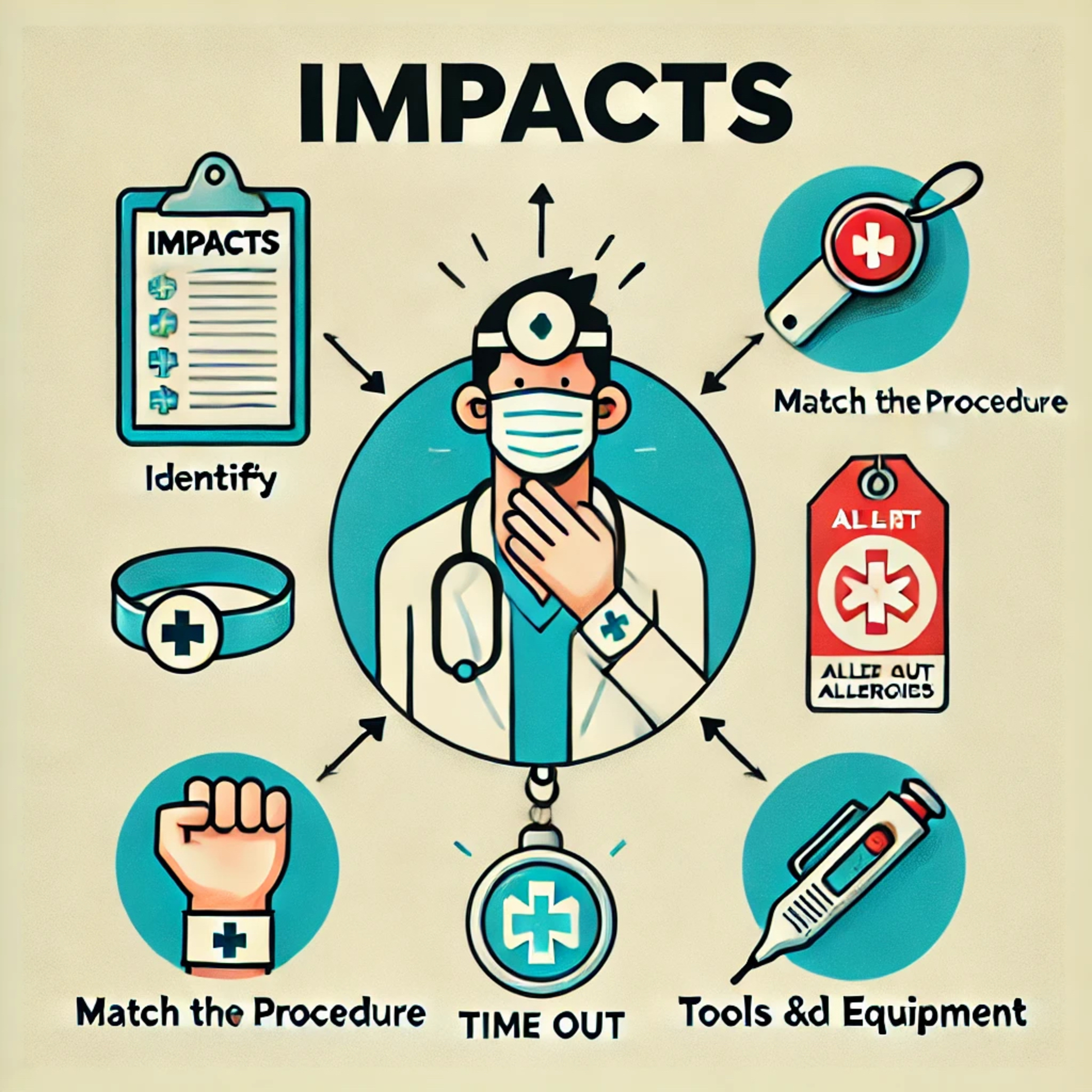 Emergency Medicine MnemonicsIMPACTS: timeout mnemonic pre-procedure (your smooth professional timeout impacts everything)Procedure Timeout Mnemonic: This mnemonic covers the key elements to verify before starting, ensuring patient safety and team communication. Here's what **IMPACTS** stands for:1. **I – Identify**: - **Verify the Patient's Identity**: Confirm the patient's full name, date of birth, and medical record number using their wristband and verbally with the patient if possible.2. **M – Match the Procedure**: - **Verify the Procedure Being Done**: State the exact name of the procedure to be performed. Ensure the team agrees, and that it matches the consent form...2024-10-0120 min
Emergency Medicine MnemonicsIMPACTS: timeout mnemonic pre-procedure (your smooth professional timeout impacts everything)Procedure Timeout Mnemonic: This mnemonic covers the key elements to verify before starting, ensuring patient safety and team communication. Here's what **IMPACTS** stands for:1. **I – Identify**: - **Verify the Patient's Identity**: Confirm the patient's full name, date of birth, and medical record number using their wristband and verbally with the patient if possible.2. **M – Match the Procedure**: - **Verify the Procedure Being Done**: State the exact name of the procedure to be performed. Ensure the team agrees, and that it matches the consent form...2024-10-0120 min Emergency Medicine MnemonicsCATS Hypocalcemia Signs and EKG mnemonic (Southern California cool cats)This is the CATS mnemonic to remember the signs for hypocalcemia.### **Causes of Hypocalcemia**- **Hypoparathyroidism**: Often due to surgical removal of parathyroid glands.- **Vitamin D deficiency**: Impaired calcium absorption.- **Renal disease**: Reduced conversion of Vitamin D to its active form and poor calcium reabsorption.- **Pancreatitis**: Fat saponification binds calcium.- **Hypomagnesemia**: Leads to impaired PTH secretion.- **Medications**: Bisphosphonates, loop diuretics, phenytoin, etc.### **Clinical Presentation**- **Neuromuscular Irritability**:2024-09-2614 min
Emergency Medicine MnemonicsCATS Hypocalcemia Signs and EKG mnemonic (Southern California cool cats)This is the CATS mnemonic to remember the signs for hypocalcemia.### **Causes of Hypocalcemia**- **Hypoparathyroidism**: Often due to surgical removal of parathyroid glands.- **Vitamin D deficiency**: Impaired calcium absorption.- **Renal disease**: Reduced conversion of Vitamin D to its active form and poor calcium reabsorption.- **Pancreatitis**: Fat saponification binds calcium.- **Hypomagnesemia**: Leads to impaired PTH secretion.- **Medications**: Bisphosphonates, loop diuretics, phenytoin, etc.### **Clinical Presentation**- **Neuromuscular Irritability**:2024-09-2614 min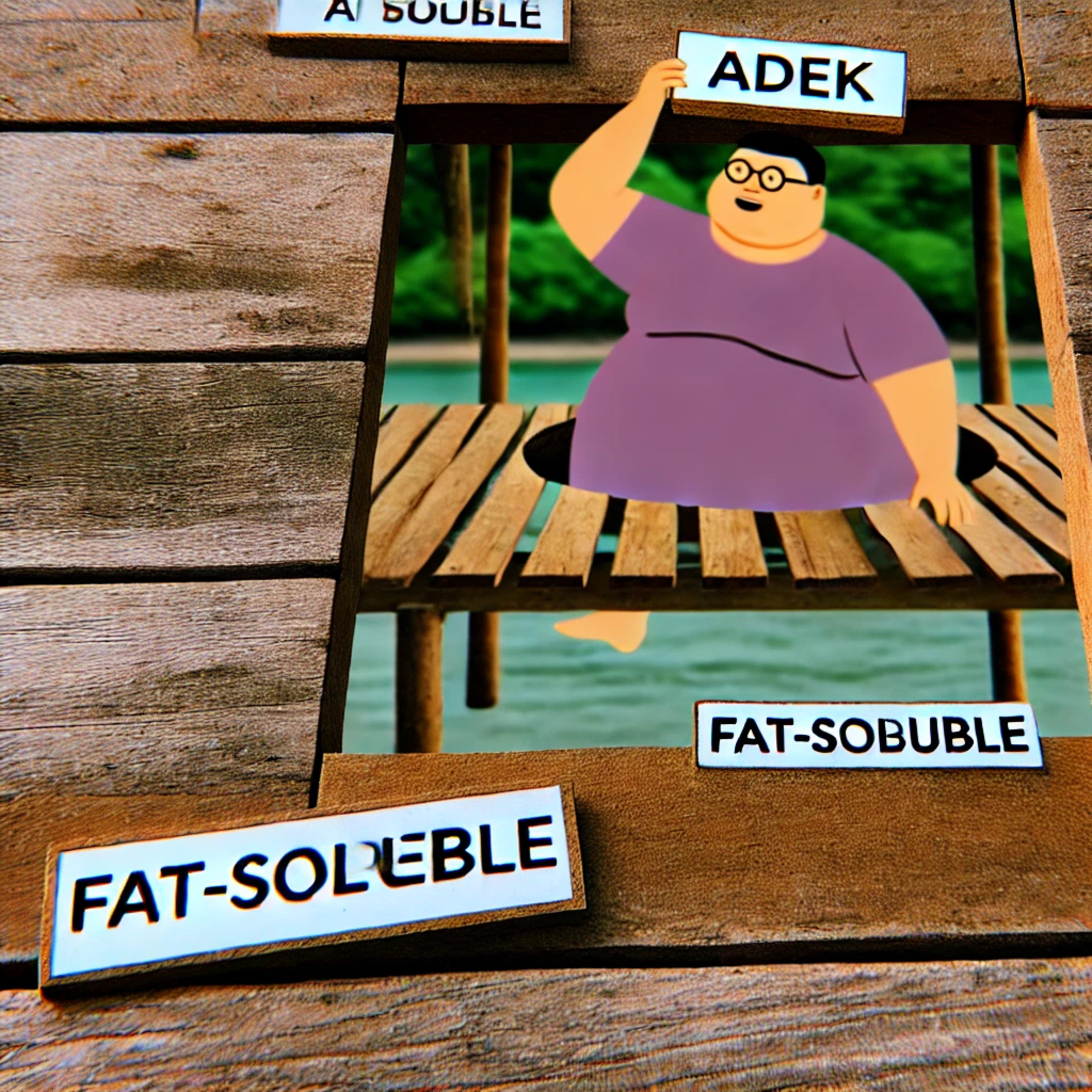 Emergency Medicine MnemonicsADEK: fat soluble vitamins mnemonicIn emergency medicine education, understanding the fat-soluble vitamins A, D, E, and K (ADEK) is important because they play crucial roles in the body, and both their deficiency and toxicity can have serious health consequences. Here's a breakdown:### Vitamin A:- **Function**: Important for vision, immune function, and skin health.- **Deficiency**: Can lead to night blindness, dry eyes, and increased infection risk.- **Toxicity**: Excessive intake can cause symptoms like headache, dizziness, nausea, and liver damage (known as hypervitaminosis A).### Vitamin D:2024-09-2604 min
Emergency Medicine MnemonicsADEK: fat soluble vitamins mnemonicIn emergency medicine education, understanding the fat-soluble vitamins A, D, E, and K (ADEK) is important because they play crucial roles in the body, and both their deficiency and toxicity can have serious health consequences. Here's a breakdown:### Vitamin A:- **Function**: Important for vision, immune function, and skin health.- **Deficiency**: Can lead to night blindness, dry eyes, and increased infection risk.- **Toxicity**: Excessive intake can cause symptoms like headache, dizziness, nausea, and liver damage (known as hypervitaminosis A).### Vitamin D:2024-09-2604 min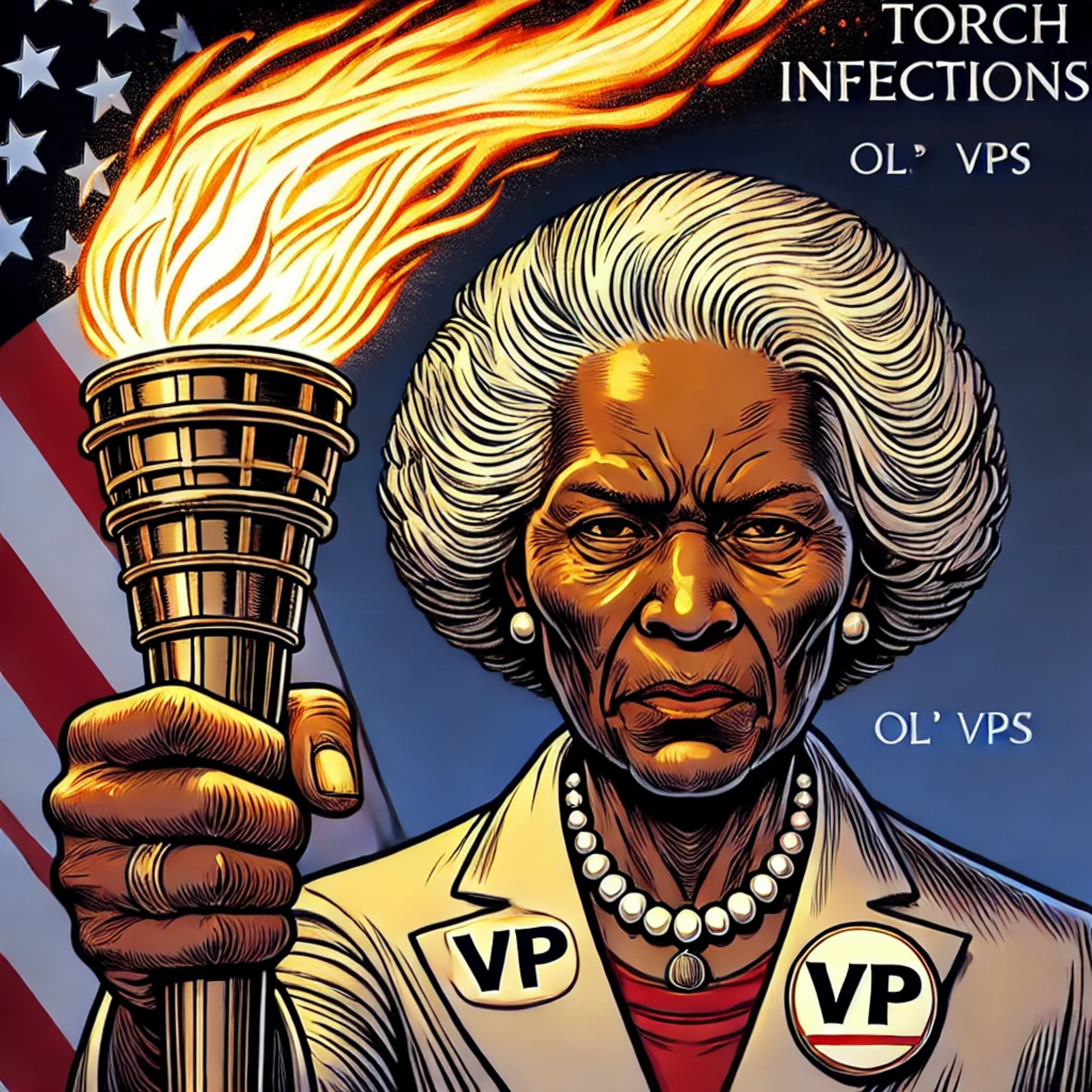 Emergency Medicine MnemonicsTORCH: ol’ VPs (old vice presidents) congenital infections mnemonicTORCH: ol’ VPs
congenital infections mnemonic2024-09-2431 min
Emergency Medicine MnemonicsTORCH: ol’ VPs (old vice presidents) congenital infections mnemonicTORCH: ol’ VPs
congenital infections mnemonic2024-09-2431 min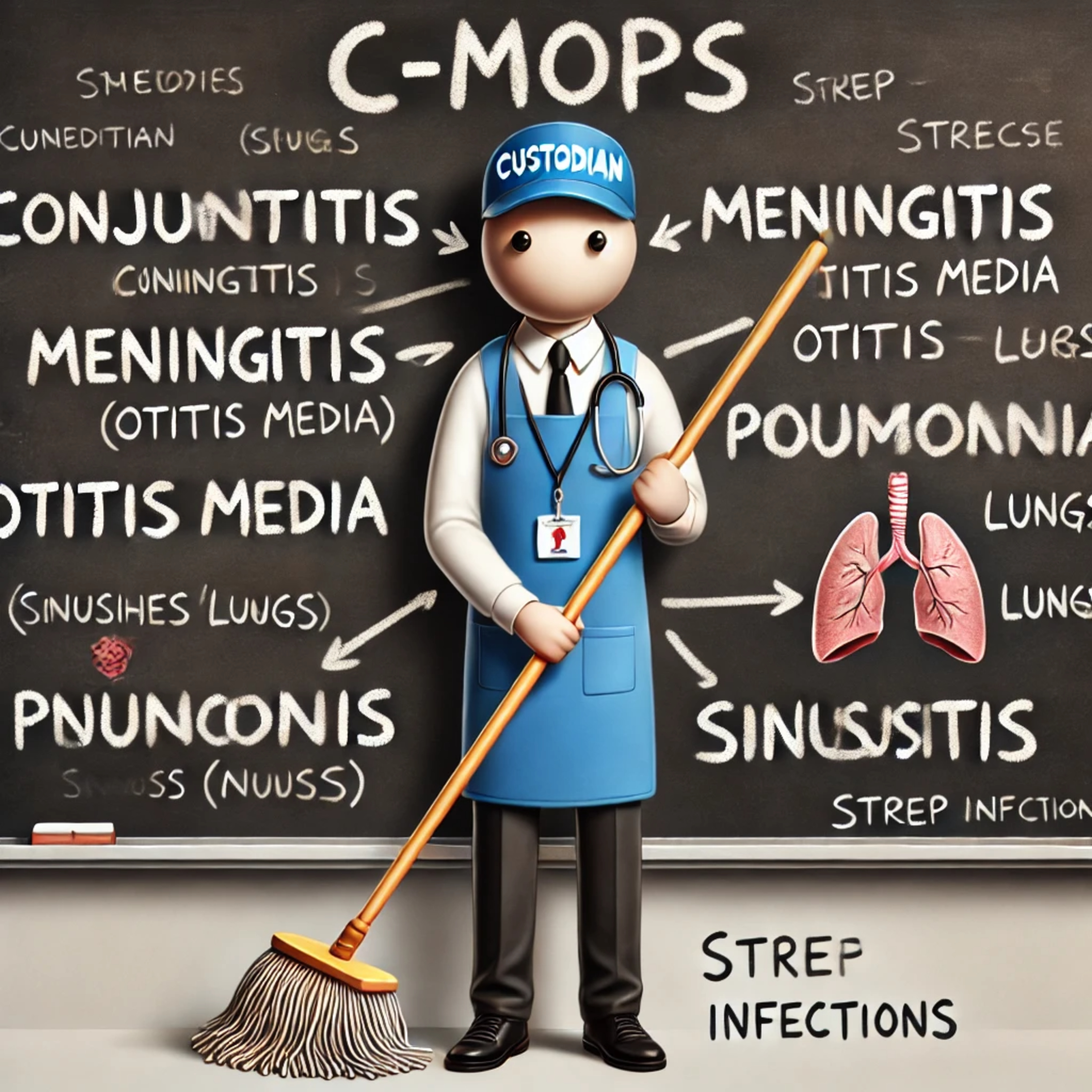 Emergency Medicine MnemonicsC-MOPS: Strep Infections (custodian mops) mnemonic for Streptococcus common pathologyThe C-MOPS mnemonic represents conjunctivitis, meningitis, otitis media, pneumonia and sinusitis.
Streptococcus pneumoniae classically causes rusty colored sputum, which can help identify the pathogen. 2024-09-2106 min
Emergency Medicine MnemonicsC-MOPS: Strep Infections (custodian mops) mnemonic for Streptococcus common pathologyThe C-MOPS mnemonic represents conjunctivitis, meningitis, otitis media, pneumonia and sinusitis.
Streptococcus pneumoniae classically causes rusty colored sputum, which can help identify the pathogen. 2024-09-2106 min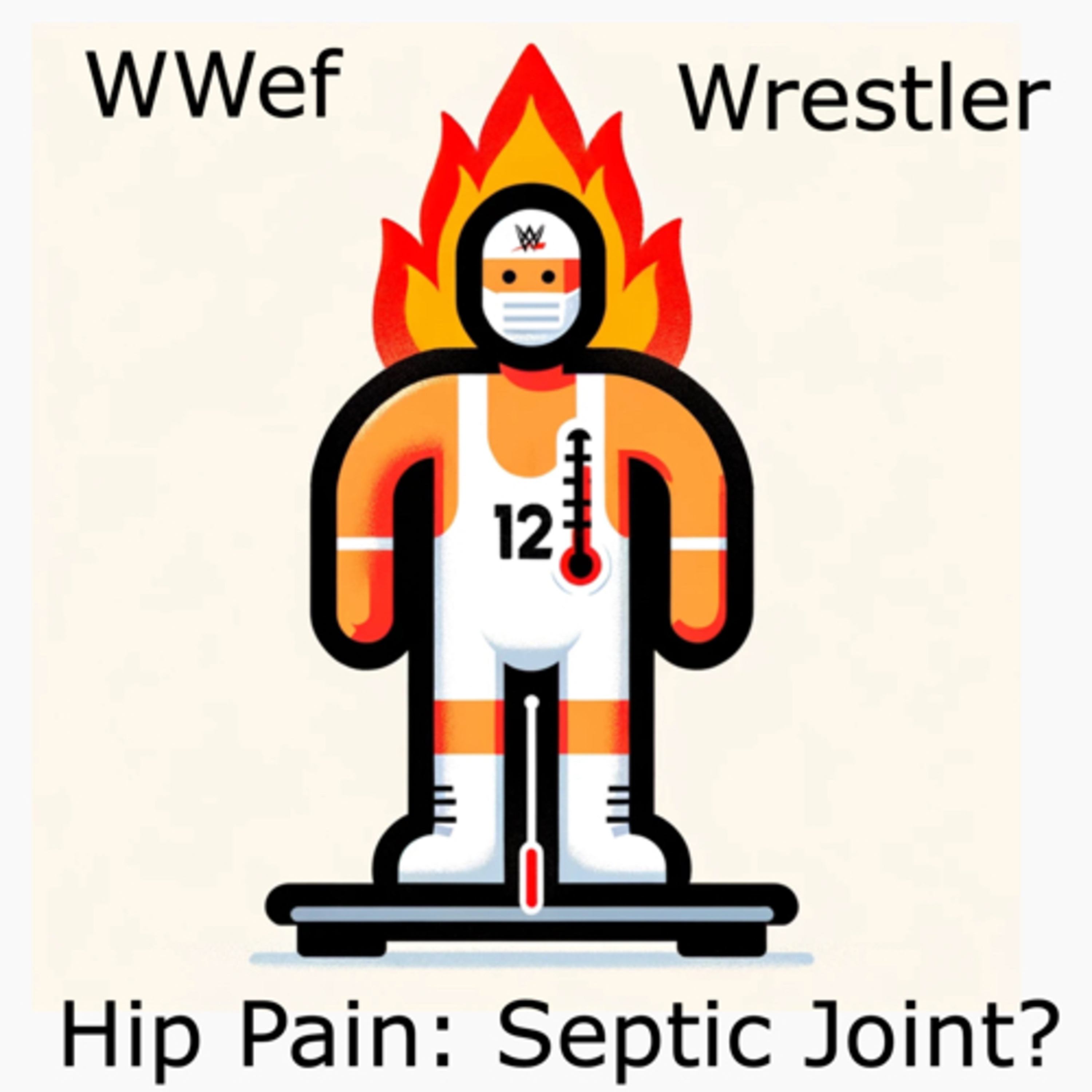 Emergency Medicine MnemonicsKocher criteria: WWef septic hip VS transient synovitisThink of a WWF player getting hit by a Coke bottle in the hip. WWef
- Weight bearing issues
- WBC >12
- ESR >40
- Fever >38.5
Score of 1 = 3%, 2=40%, 90+ for 3 and 4
ALSO, REMEMBER TO GET A CRP!2024-05-1612 min
Emergency Medicine MnemonicsKocher criteria: WWef septic hip VS transient synovitisThink of a WWF player getting hit by a Coke bottle in the hip. WWef
- Weight bearing issues
- WBC >12
- ESR >40
- Fever >38.5
Score of 1 = 3%, 2=40%, 90+ for 3 and 4
ALSO, REMEMBER TO GET A CRP!2024-05-1612 min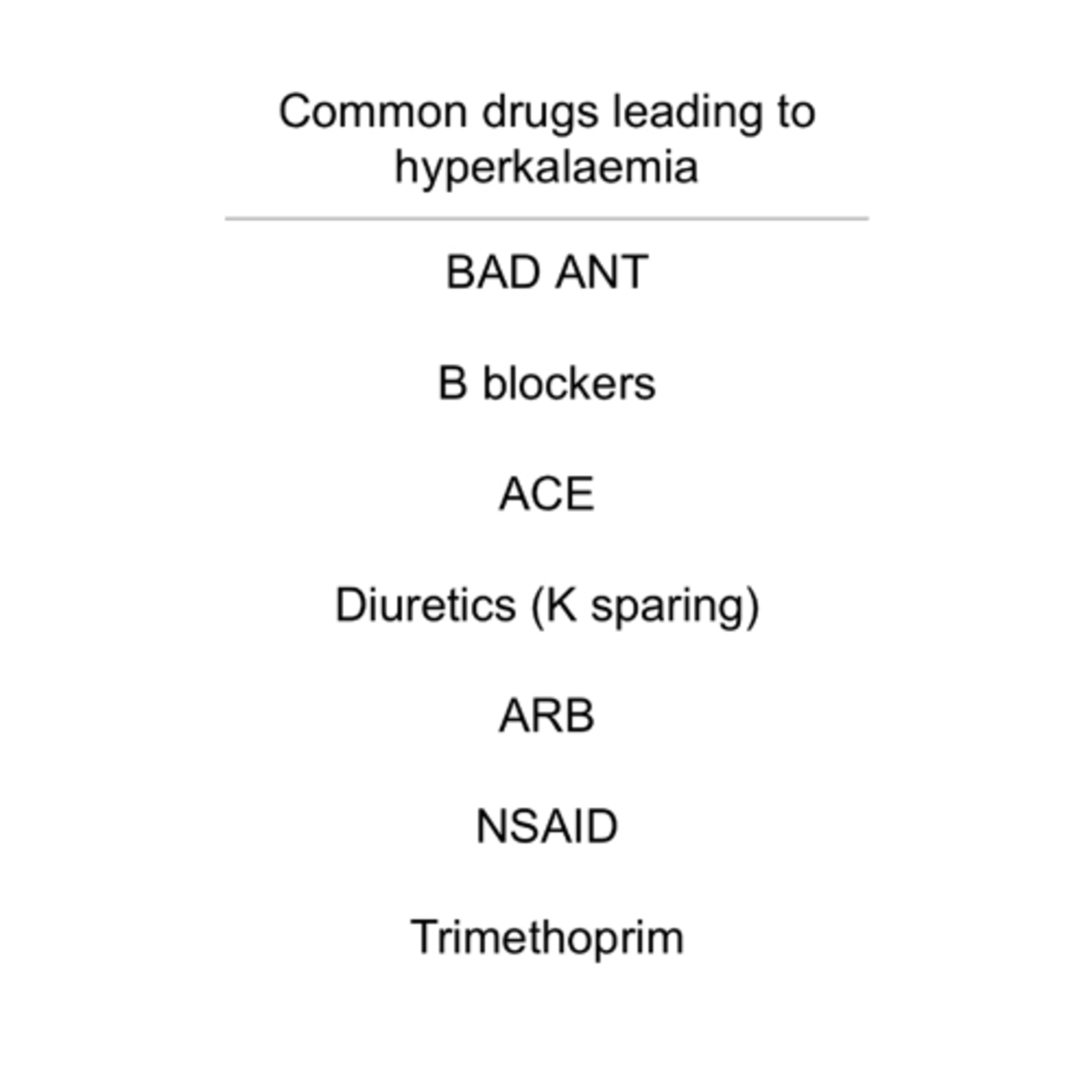 Emergency Medicine MnemonicsBAD ANT: Drugs leading to hyperkalaemiaB blockers
ACE
Diuretics (K sparing)
ARB
NSAID
Trimethoprim2024-05-1605 min
Emergency Medicine MnemonicsBAD ANT: Drugs leading to hyperkalaemiaB blockers
ACE
Diuretics (K sparing)
ARB
NSAID
Trimethoprim2024-05-1605 min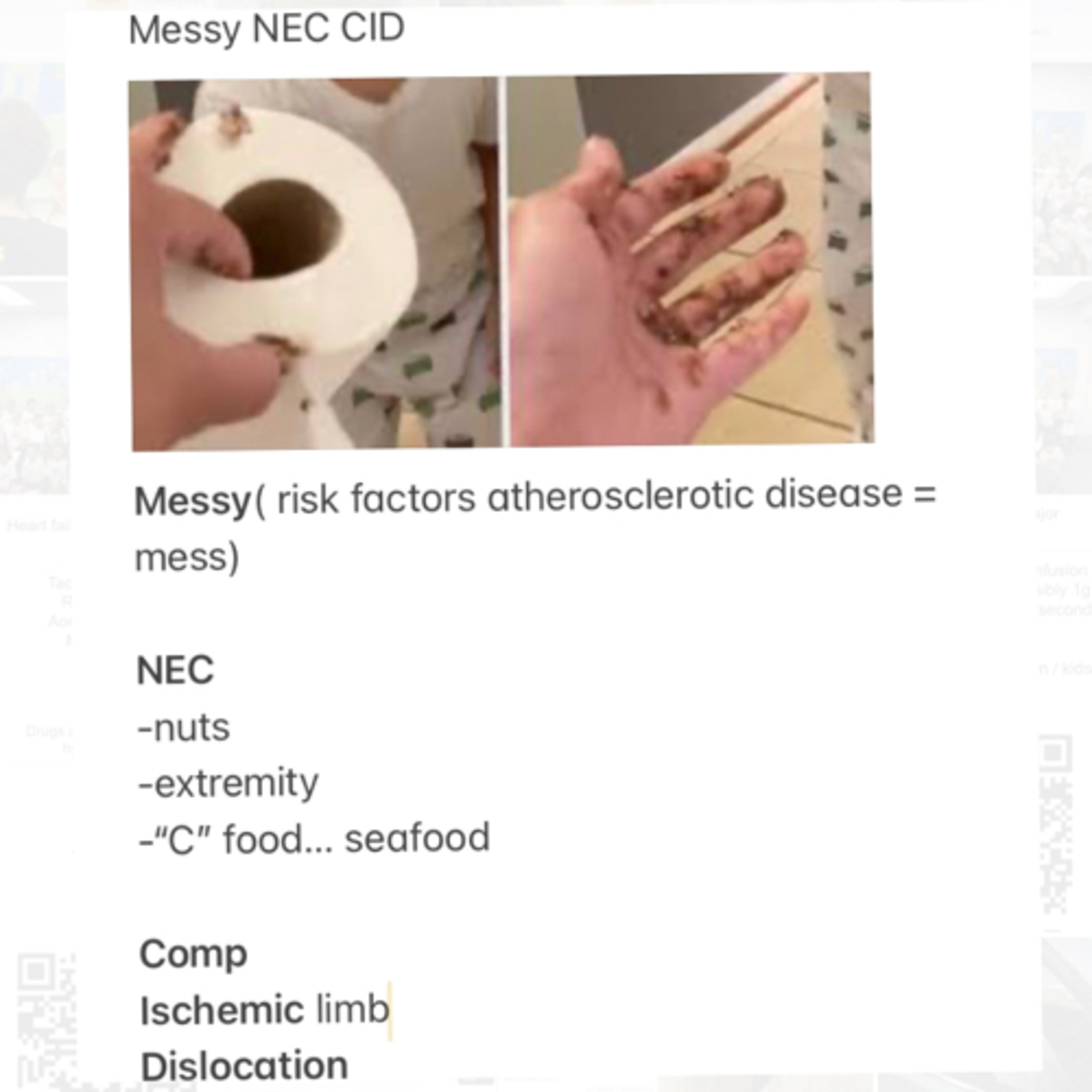 Emergency Medicine MnemonicsPain Out Of Proportion: Messy Neck Kid (Messy NEC CID) remember the poop prankRemember the IG poop toilet paper exchange prank…kids got pain way out of proportion screaming & running to the sink.
Imagine wiping peanut butter on the kids neck….
Messy NEC CID
Messy( risk factors atherosclerotic disease = mess)
NEC
-nuts
-extremity
-“C” food… seafood
Comp
Ischemic limb
Dislocation
1. Mesenteric Ischemia:
- Vascular occlusive emergency
- Varied presentation, including severe pain and associated vomiting or hematochezia
- Pain may not worsen with abdominal palpation
- Only 25% will have hemoccult-positive stool
2. Necrotizing Fasciitis:
- Type I: NUTS: Polymicrobial, trunk and perineal area, associated with immunocompromised states (DM, etc)
- Type II: Extremity: Streptococ...2024-05-1520 min
Emergency Medicine MnemonicsPain Out Of Proportion: Messy Neck Kid (Messy NEC CID) remember the poop prankRemember the IG poop toilet paper exchange prank…kids got pain way out of proportion screaming & running to the sink.
Imagine wiping peanut butter on the kids neck….
Messy NEC CID
Messy( risk factors atherosclerotic disease = mess)
NEC
-nuts
-extremity
-“C” food… seafood
Comp
Ischemic limb
Dislocation
1. Mesenteric Ischemia:
- Vascular occlusive emergency
- Varied presentation, including severe pain and associated vomiting or hematochezia
- Pain may not worsen with abdominal palpation
- Only 25% will have hemoccult-positive stool
2. Necrotizing Fasciitis:
- Type I: NUTS: Polymicrobial, trunk and perineal area, associated with immunocompromised states (DM, etc)
- Type II: Extremity: Streptococ...2024-05-1520 min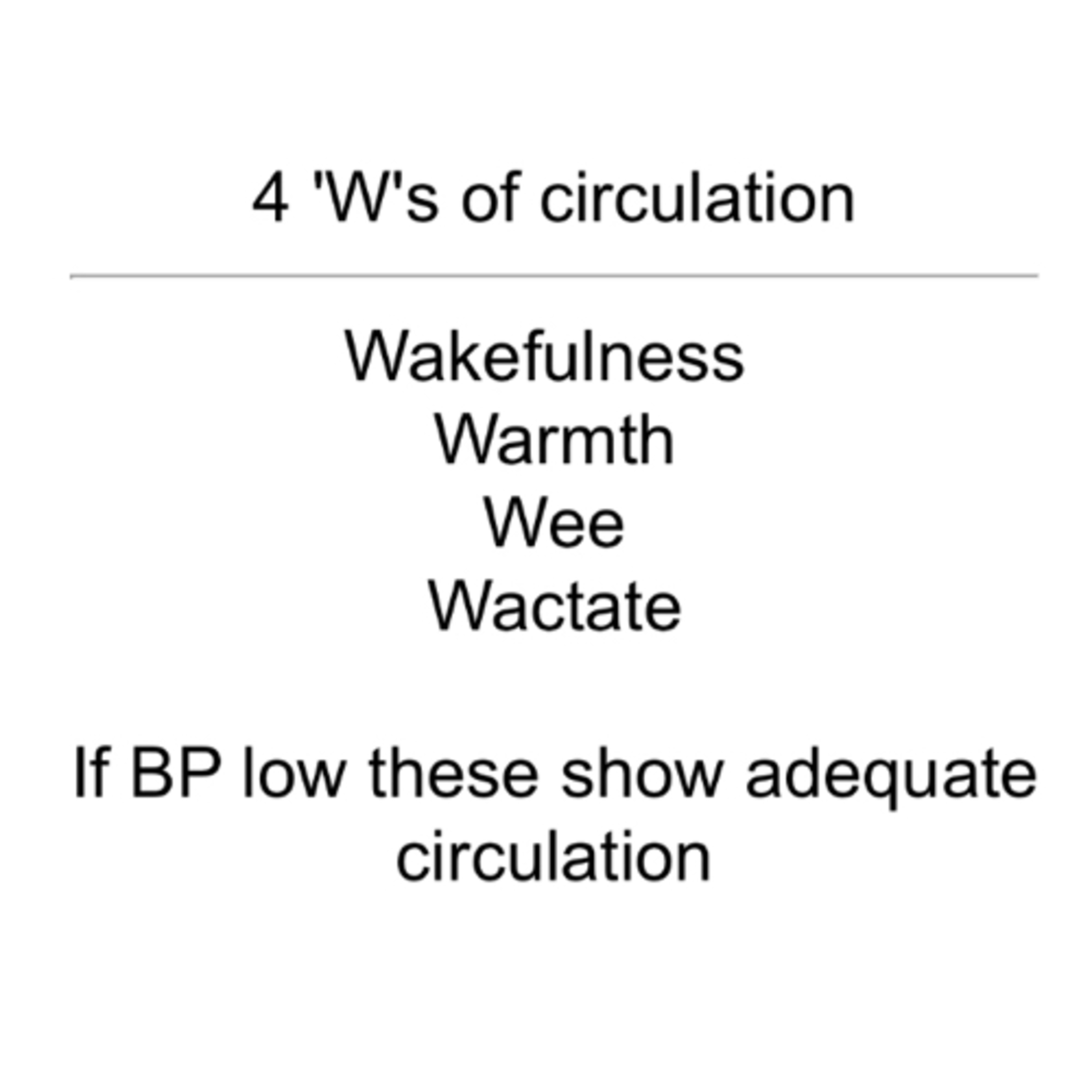 Emergency Medicine Mnemonics4 'W's of circulationWakefulness
Warmth
Wee
Wactate
If BP low these show adequate circulation2024-05-1405 min
Emergency Medicine Mnemonics4 'W's of circulationWakefulness
Warmth
Wee
Wactate
If BP low these show adequate circulation2024-05-1405 min Emergency Medicine MnemonicsGCS Score: MAJOR TOM SONG coma score EVM mnemonicMy absolute favorite podcast of all time!
Classification of brain injury via GCS:
2024-05-1037 min
Emergency Medicine MnemonicsGCS Score: MAJOR TOM SONG coma score EVM mnemonicMy absolute favorite podcast of all time!
Classification of brain injury via GCS:
2024-05-1037 min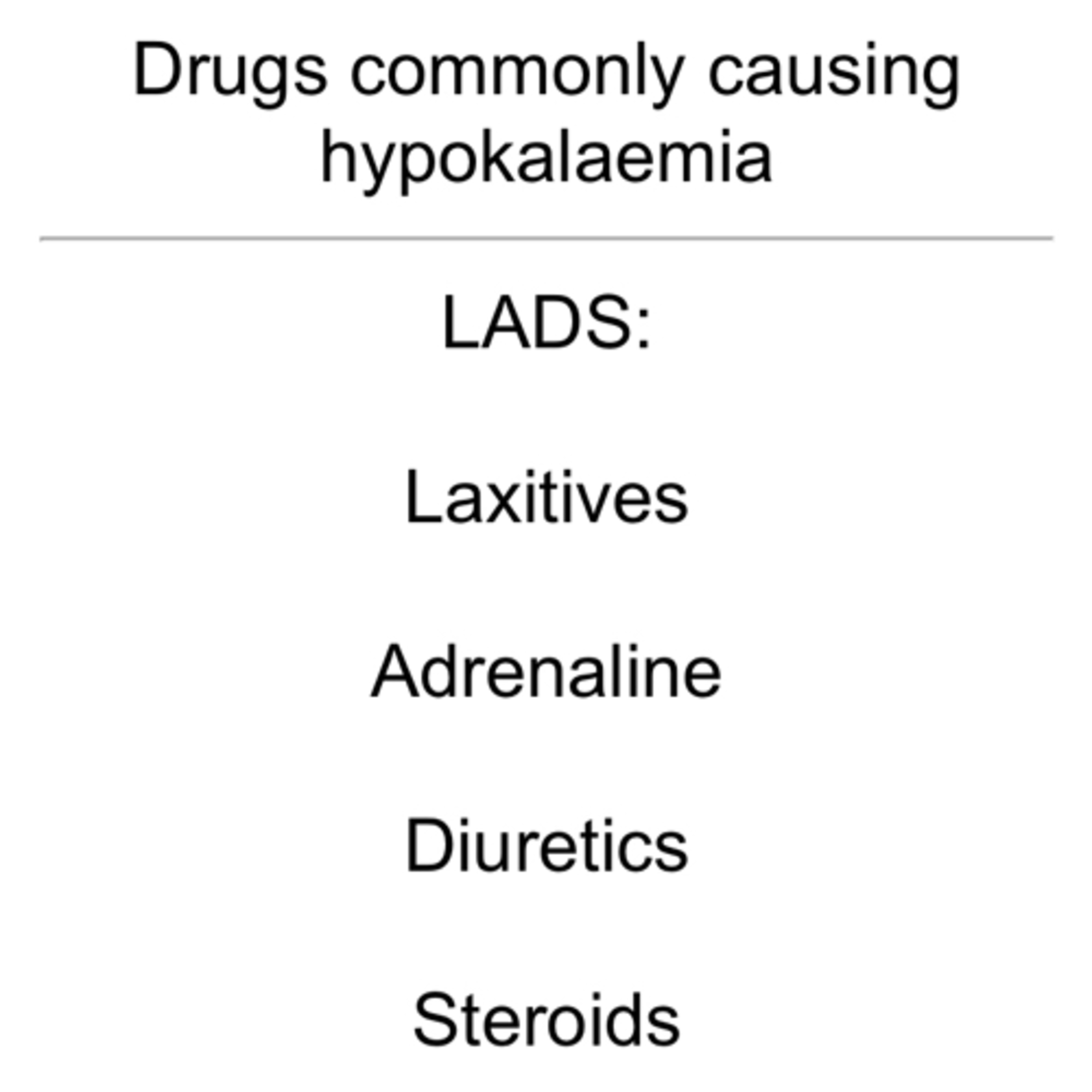 Emergency Medicine MnemonicsLADS: Drugs that cause hypokalaemiaLADS:
Laxitives
Adrenaline
Diuretics
Steroids2024-05-1009 min
Emergency Medicine MnemonicsLADS: Drugs that cause hypokalaemiaLADS:
Laxitives
Adrenaline
Diuretics
Steroids2024-05-1009 min Emergency Medicine MnemonicsDANISH: Cerebellar signsDysdiadochokinesia / Dysmetria
Ataxia
Nystagmus
Intention tremor
Slurred speech
Hypotonia
Dysdiadochokinesia, also known as adiadochokinesia, is the medical term for the inability to perform rapid, alternating muscle movements. The term comes from the Greek words dys, meaning "bad", diadochos, meaning "working in turn", and kinesis, meaning "movement".2024-05-1008 min
Emergency Medicine MnemonicsDANISH: Cerebellar signsDysdiadochokinesia / Dysmetria
Ataxia
Nystagmus
Intention tremor
Slurred speech
Hypotonia
Dysdiadochokinesia, also known as adiadochokinesia, is the medical term for the inability to perform rapid, alternating muscle movements. The term comes from the Greek words dys, meaning "bad", diadochos, meaning "working in turn", and kinesis, meaning "movement".2024-05-1008 min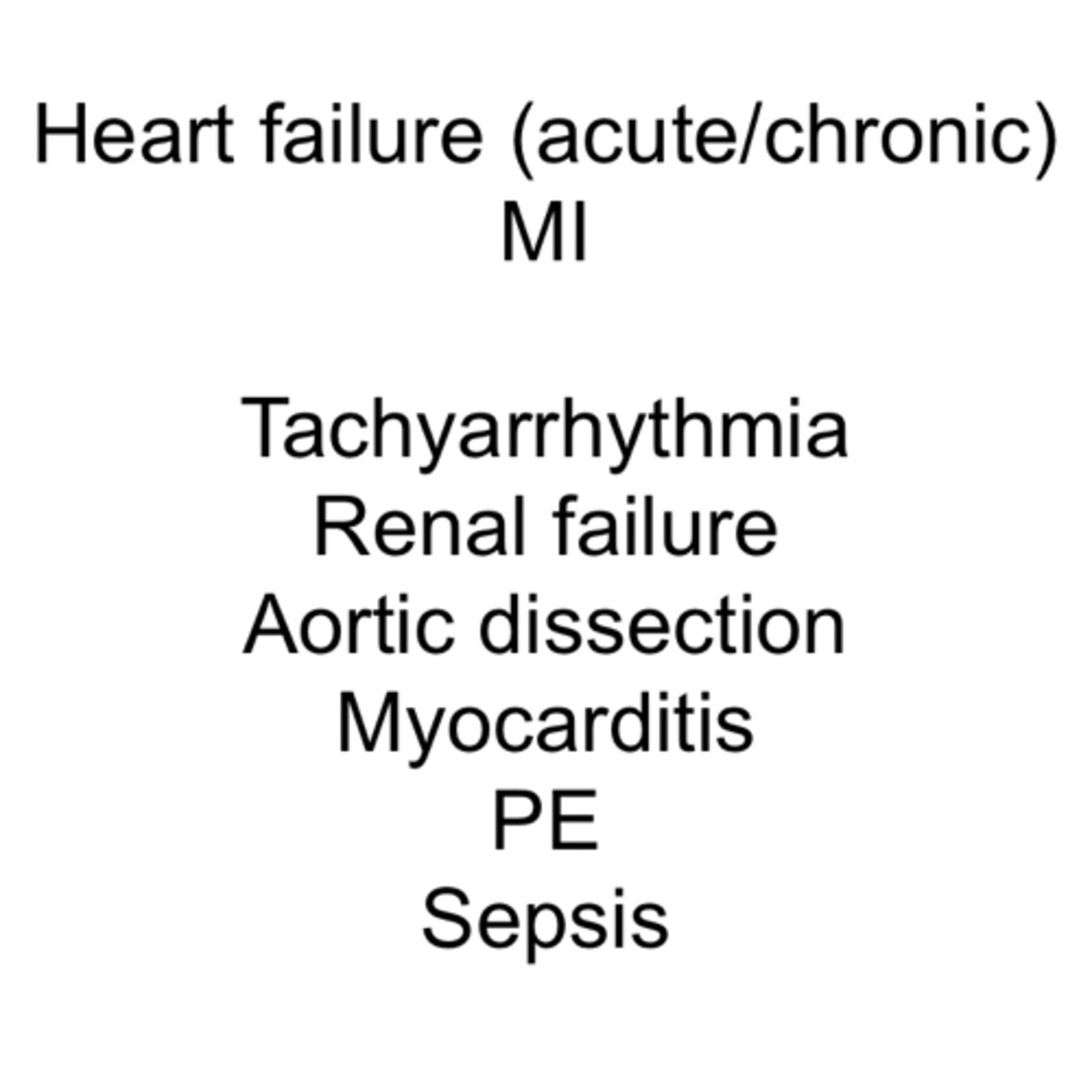 Emergency Medicine MnemonicsHM TRAMPS: Elevated Troponin 8 CausesHeart failure (acute/chronic)
MI
Tachyarrhythmia
Renal failure
Aortic dissection
Myocarditis
PE
Sepsis
(think of homeless coming in claiming chest pain)2024-05-1007 min
Emergency Medicine MnemonicsHM TRAMPS: Elevated Troponin 8 CausesHeart failure (acute/chronic)
MI
Tachyarrhythmia
Renal failure
Aortic dissection
Myocarditis
PE
Sepsis
(think of homeless coming in claiming chest pain)2024-05-1007 min Emergency Medicine MnemonicsSEPSIS MnemonicSEPSIS Mnemonic2024-05-0430 min
Emergency Medicine MnemonicsSEPSIS MnemonicSEPSIS Mnemonic2024-05-0430 min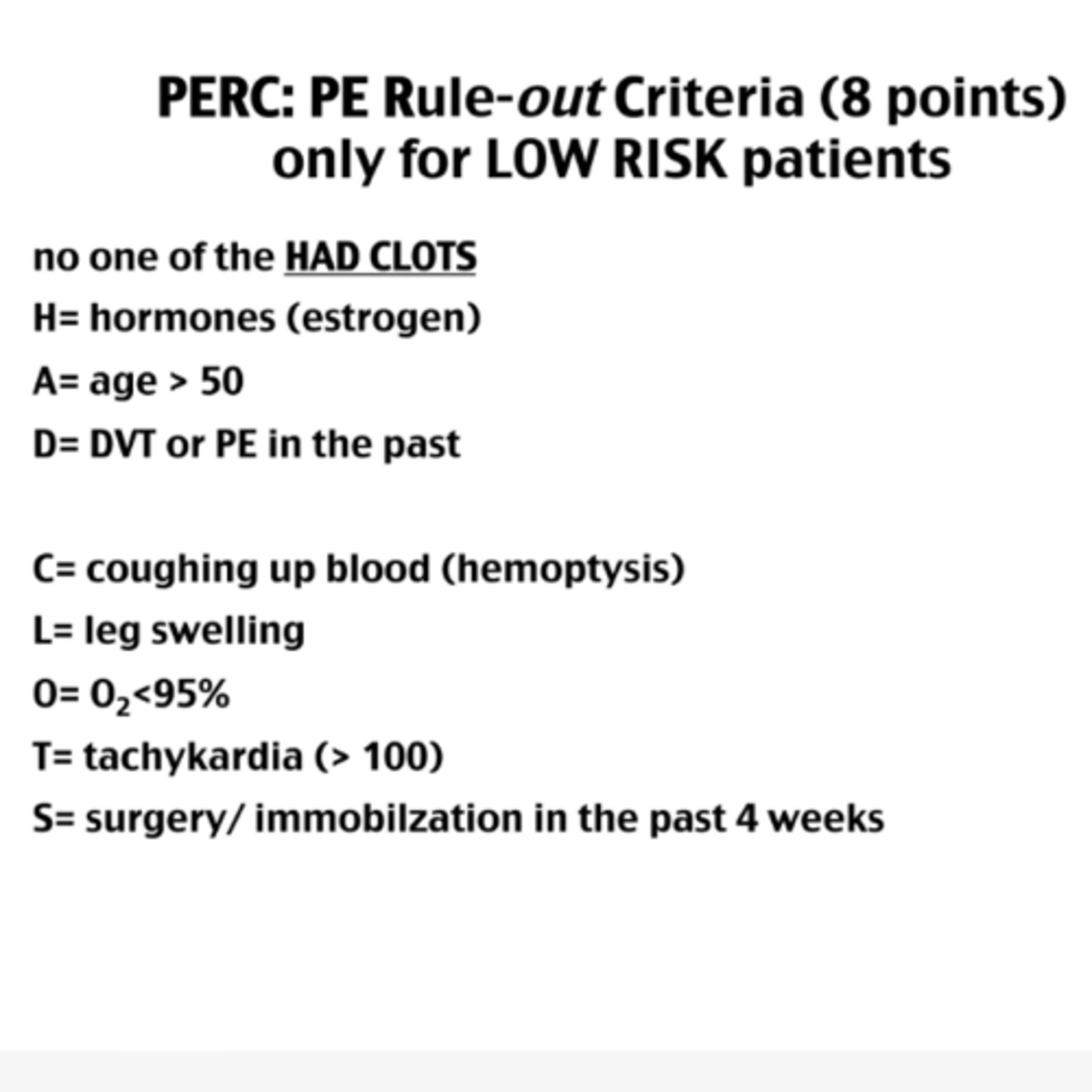 Emergency Medicine MnemonicsPERC Score: HAD CLOTS mnemonic for pulmonary embolism rule out criteriaThe PERC (Pulmonary Embolism Rule-out Criteria) Rule is a "rule-out" tool – all variables must receive a "no" to be negative.2024-03-2913 min
Emergency Medicine MnemonicsPERC Score: HAD CLOTS mnemonic for pulmonary embolism rule out criteriaThe PERC (Pulmonary Embolism Rule-out Criteria) Rule is a "rule-out" tool – all variables must receive a "no" to be negative.2024-03-2913 min Emergency Medicine MnemonicsHeadache: Deadly Differentials & Red FlagsHeadache: Deadly Differentials & Red Flags2024-03-2254 min
Emergency Medicine MnemonicsHeadache: Deadly Differentials & Red FlagsHeadache: Deadly Differentials & Red Flags2024-03-2254 min Emergency Medicine MnemonicsAsthma & Croup Quiz: basic meds knowledgeAsthma & Croup Quiz: basic meds knowledge for educational purposes only!2024-03-1813 min
Emergency Medicine MnemonicsAsthma & Croup Quiz: basic meds knowledgeAsthma & Croup Quiz: basic meds knowledge for educational purposes only!2024-03-1813 min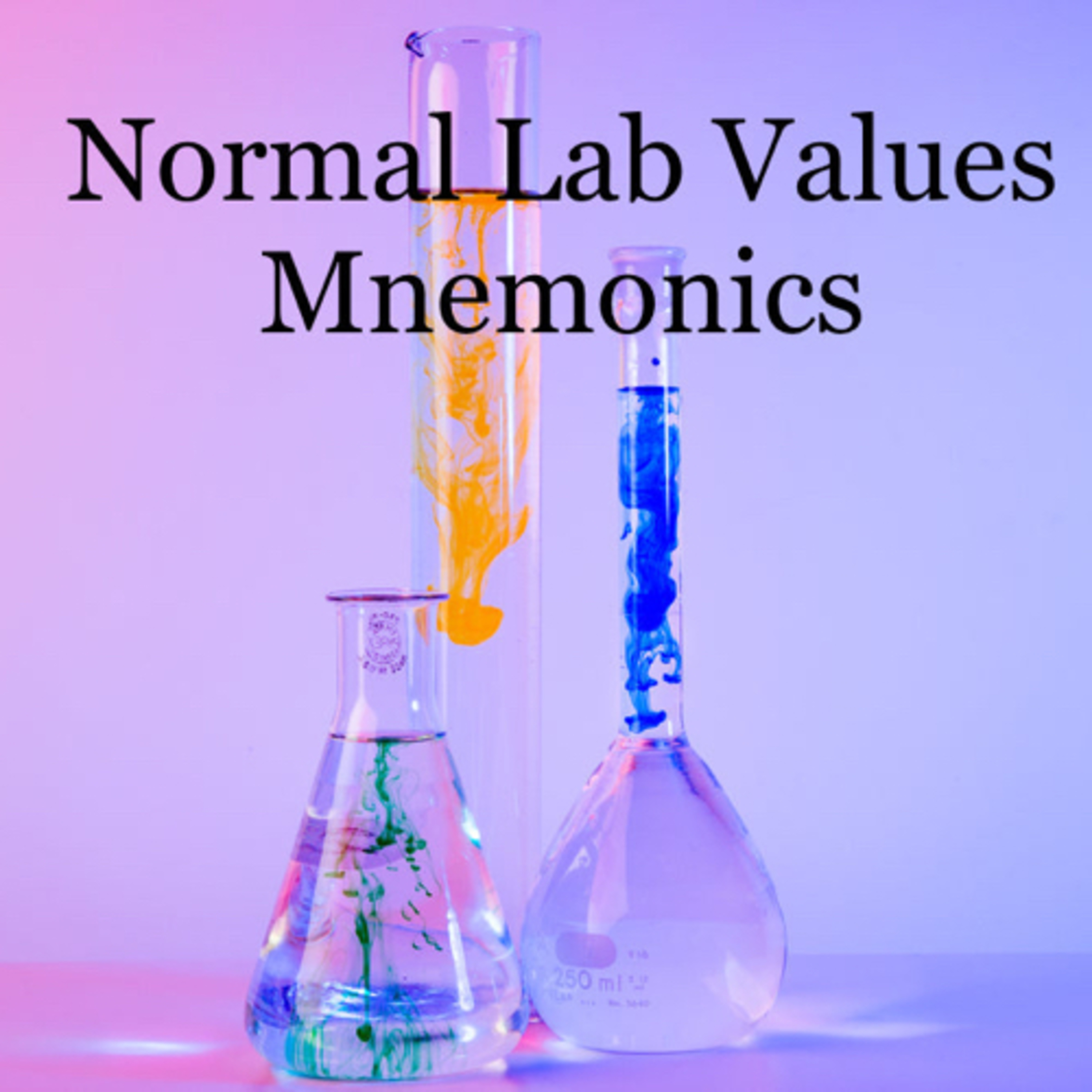 Emergency Medicine MnemonicsNormal Lab Values Mnemonic: CMP, CBC, ABG, CoagsNormal Lab Values Mnemonic: CMP, CBC, ABG, Coags2024-03-1827 min
Emergency Medicine MnemonicsNormal Lab Values Mnemonic: CMP, CBC, ABG, CoagsNormal Lab Values Mnemonic: CMP, CBC, ABG, Coags2024-03-1827 min Emergency Medicine MnemonicsBMP Fishbone: Normal Lab Values MnemonicRemember the Chem7 by the mnemonic: Salty Bun (Na/Cl, BUN), Pot of Hot Coffee, Cream (K, HCO3, Cr), and Sugar (glucose)2024-02-2928 min
Emergency Medicine MnemonicsBMP Fishbone: Normal Lab Values MnemonicRemember the Chem7 by the mnemonic: Salty Bun (Na/Cl, BUN), Pot of Hot Coffee, Cream (K, HCO3, Cr), and Sugar (glucose)2024-02-2928 min Emergency Medicine MnemonicsHs And Ts: Reversible Cardiac ArrestHippo and Thor. That’s all you need to remember the reversible causes of cardiac arrest.2023-09-2324 min
Emergency Medicine MnemonicsHs And Ts: Reversible Cardiac ArrestHippo and Thor. That’s all you need to remember the reversible causes of cardiac arrest.2023-09-2324 min Emergency Medicine MnemonicsSTROKE ALGORITHM: Last Known NormalShout out to Dr Jared Ross for laying the foundation knowledge for this episode about Stroke.2023-09-211h 07
Emergency Medicine MnemonicsSTROKE ALGORITHM: Last Known NormalShout out to Dr Jared Ross for laying the foundation knowledge for this episode about Stroke.2023-09-211h 07 Emergency Medicine MnemonicsEKG Flowchart: Is there a P WaveEKG Flowchart: Is there a P Wave2023-09-0224 min
Emergency Medicine MnemonicsEKG Flowchart: Is there a P WaveEKG Flowchart: Is there a P Wave2023-09-0224 min Emergency Medicine MnemonicsACLS Basic Basic Basic frameworkOn a piece of paper, draw three lines horizontally to divide four unique approaches to ACLS: Shockable, unshockable, bradycardia, tachycardia.
Of course, the entire paper represents CPR. These four unique approaches are how to handle the electrical and chemical aspects. You’ve got this!2023-08-3033 min
Emergency Medicine MnemonicsACLS Basic Basic Basic frameworkOn a piece of paper, draw three lines horizontally to divide four unique approaches to ACLS: Shockable, unshockable, bradycardia, tachycardia.
Of course, the entire paper represents CPR. These four unique approaches are how to handle the electrical and chemical aspects. You’ve got this!2023-08-3033 min Emergency Medicine MnemonicsThe 6-Ps of Dyspnea: Critical Pulmonary DifferentialThe 6-Ps of Dyspnea: Critical Pulmonary Differential2023-08-2321 min
Emergency Medicine MnemonicsThe 6-Ps of Dyspnea: Critical Pulmonary DifferentialThe 6-Ps of Dyspnea: Critical Pulmonary Differential2023-08-2321 min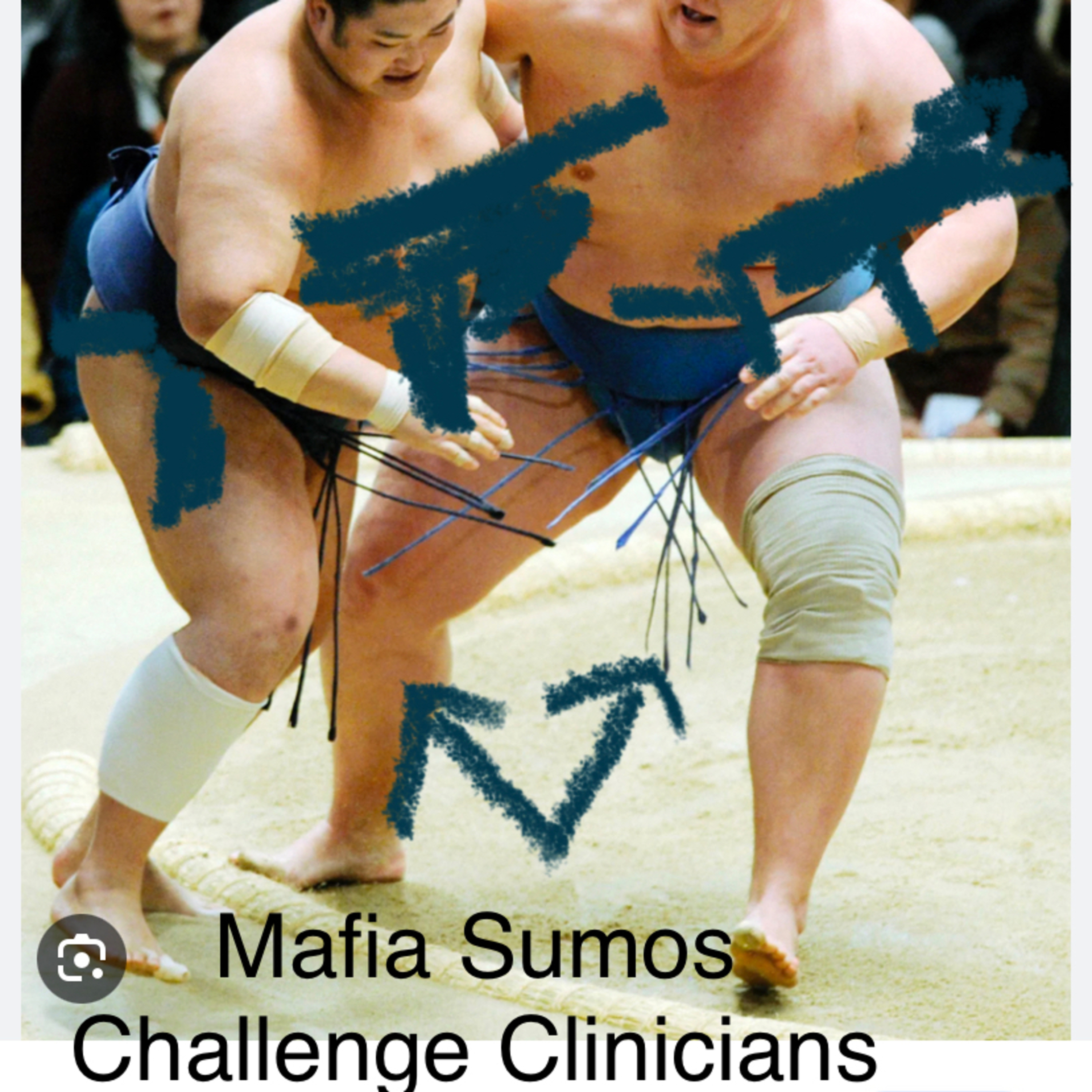 Emergency Medicine MnemonicsMafia PCC: pseudomonas antibiotics (a.k.a. shoe-domonas)Antibiotics that cover pseudomonas:
Meropenem, aztreonam, fluoroquinolones (not moxi), Imipenem, aminoglycosides, pip/tazo, cefepime, ceftazidime.
If there is a puncture wound through the foot, you want to ask if they have worn shoes because if so, you need to cover for pseudomonas.2023-08-2014 min
Emergency Medicine MnemonicsMafia PCC: pseudomonas antibiotics (a.k.a. shoe-domonas)Antibiotics that cover pseudomonas:
Meropenem, aztreonam, fluoroquinolones (not moxi), Imipenem, aminoglycosides, pip/tazo, cefepime, ceftazidime.
If there is a puncture wound through the foot, you want to ask if they have worn shoes because if so, you need to cover for pseudomonas.2023-08-2014 min Emergency Medicine MnemonicsNSAID Nexus criteria: rule out need for c spine imagingNSAID Nexus criteria: rule out need for c spine imaging2023-08-1908 min
Emergency Medicine MnemonicsNSAID Nexus criteria: rule out need for c spine imagingNSAID Nexus criteria: rule out need for c spine imaging2023-08-1908 min Emergency Medicine MnemonicsDKA the 8 I etiologies: I Dont Know AnythingDKA the 8 I etiologies: I Dont Know Anything2023-07-2413 min
Emergency Medicine MnemonicsDKA the 8 I etiologies: I Dont Know AnythingDKA the 8 I etiologies: I Dont Know Anything2023-07-2413 min Emergency Medicine MnemonicsTAPPED: 6 Chest Pain Deadly DifferentialsThe mnemonic can be remembered by ED doctor overwhelmed by so many patients when a chest pain comes in…think “oh man, I’m tapped out”…. Or think TAP P.D.E.: 6 Chest Pain Deadly Differentials.2023-07-2209 min
Emergency Medicine MnemonicsTAPPED: 6 Chest Pain Deadly DifferentialsThe mnemonic can be remembered by ED doctor overwhelmed by so many patients when a chest pain comes in…think “oh man, I’m tapped out”…. Or think TAP P.D.E.: 6 Chest Pain Deadly Differentials.2023-07-2209 min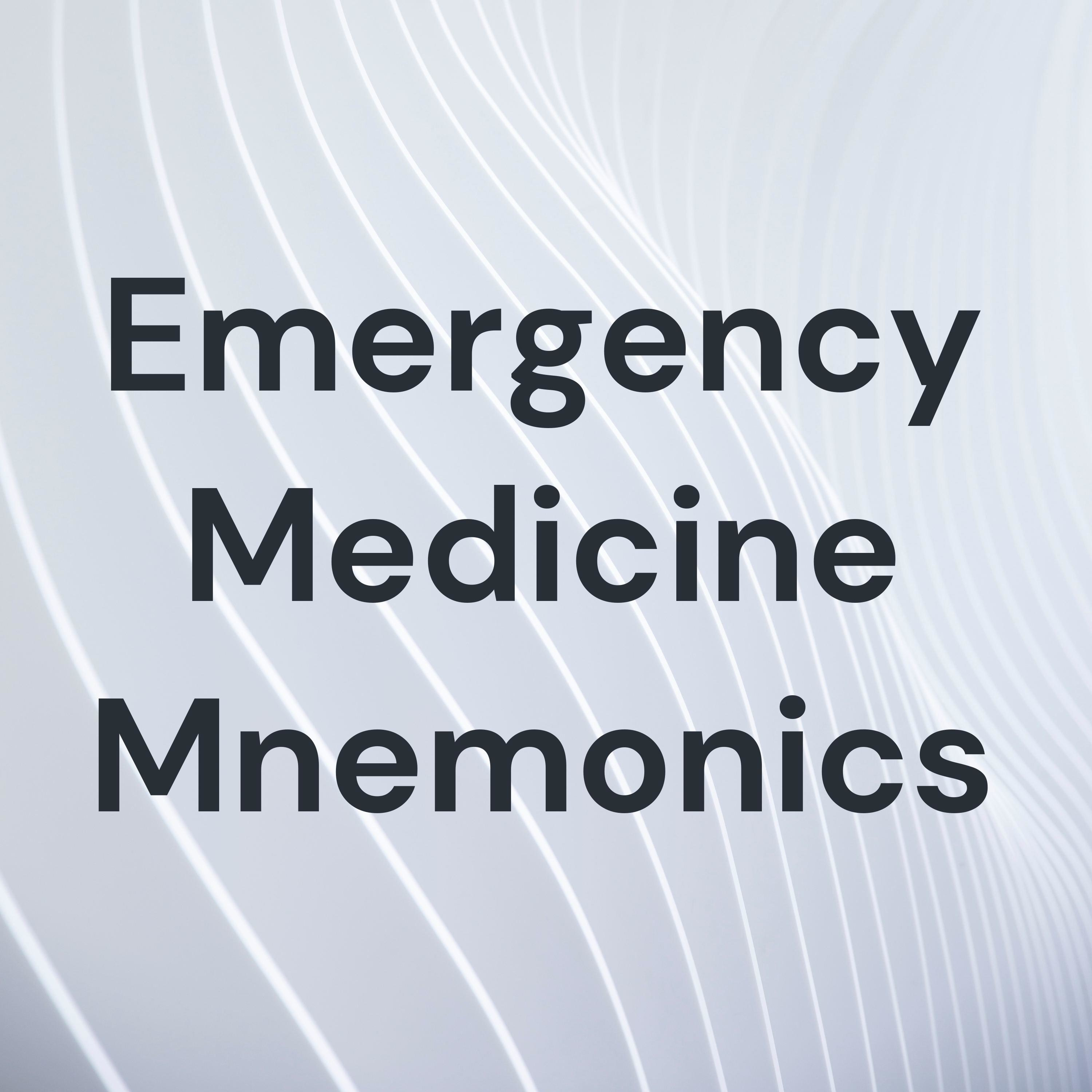 Emergency Medicine MnemonicsTAP P.D.: Chest Pain Deadly DifferentialTAP P.D.: Chest Pain Deadly Differential2023-07-2219 min
Emergency Medicine MnemonicsTAP P.D.: Chest Pain Deadly DifferentialTAP P.D.: Chest Pain Deadly Differential2023-07-2219 min Emergency Medicine MnemonicsDOTS: when to suspect a fractureOh, this is one of the most simple acronyms on how to suspect a fracture.
Deformity. Open wound. Tenderness/toddlers. Swelling.
Emergency medicine is about ruling out the bad stuff and this mnemonic can help you remember to get an x-ray.2023-07-1504 min
Emergency Medicine MnemonicsDOTS: when to suspect a fractureOh, this is one of the most simple acronyms on how to suspect a fracture.
Deformity. Open wound. Tenderness/toddlers. Swelling.
Emergency medicine is about ruling out the bad stuff and this mnemonic can help you remember to get an x-ray.2023-07-1504 min Emergency Medicine MnemonicsFAILURE: CHF Exacerbation CausesFAILURE: These are the quick recall potential etiologies of congestive heart failure exacerbations. If you can sit with the discomfort of the silence until you’re able to answer the questions, you will know that you can easily and quickly recall this knowledge comfortably in the moment you need it. Then, ask yourself: do I need to check a thyroid function? Is this patient non-compliant with medications and do I need to ask the patient if they recently took their meds? What’s the baseline hemoglobin? Is there weight gain from last visit and how much? Is this patient recently ill...2023-07-1408 min
Emergency Medicine MnemonicsFAILURE: CHF Exacerbation CausesFAILURE: These are the quick recall potential etiologies of congestive heart failure exacerbations. If you can sit with the discomfort of the silence until you’re able to answer the questions, you will know that you can easily and quickly recall this knowledge comfortably in the moment you need it. Then, ask yourself: do I need to check a thyroid function? Is this patient non-compliant with medications and do I need to ask the patient if they recently took their meds? What’s the baseline hemoglobin? Is there weight gain from last visit and how much? Is this patient recently ill...2023-07-1408 min Emergency Medicine MnemonicsAEIOU TIPS: Altered Mental StatusAEIOU TIPS: Altered Mental Status broad differential. Sit with the discomfort of this episode to master 17 broad differentials for AMS.2023-07-1222 min
Emergency Medicine MnemonicsAEIOU TIPS: Altered Mental StatusAEIOU TIPS: Altered Mental Status broad differential. Sit with the discomfort of this episode to master 17 broad differentials for AMS.2023-07-1222 min Emergency Medicine MnemonicsSyncope: Is it Cardiac? 3 Main CategoriesSyncope: Cardiac, hypovolemic, Neuro
Most important to establish from the history is “was there a prodrome?”2023-07-1112 min
Emergency Medicine MnemonicsSyncope: Is it Cardiac? 3 Main CategoriesSyncope: Cardiac, hypovolemic, Neuro
Most important to establish from the history is “was there a prodrome?”2023-07-1112 min Emergency Medicine MnemonicsTachy Epsilon: Cardiac Syncope EKG findingsTachy Epsilon: Cardiac Syncope EKG findings.
Tacky, epsilon, prolongs delta with 2 to 3 daggers in saddle.
If there is a syncopal episode, please don’t be the provider who merely states NO STEMI… The standard of care is to evaluate the EKG for more than just myocardial infarction as the cause of a syncopal episode. Go above and beyond the standard of care to at least consider the 7 cardiac EKG findings for syncope.2023-07-1111 min
Emergency Medicine MnemonicsTachy Epsilon: Cardiac Syncope EKG findingsTachy Epsilon: Cardiac Syncope EKG findings.
Tacky, epsilon, prolongs delta with 2 to 3 daggers in saddle.
If there is a syncopal episode, please don’t be the provider who merely states NO STEMI… The standard of care is to evaluate the EKG for more than just myocardial infarction as the cause of a syncopal episode. Go above and beyond the standard of care to at least consider the 7 cardiac EKG findings for syncope.2023-07-1111 min Emergency Medicine MnemonicsIve Fallen: Falls (possible causes)I’ve Fallen: Falls (possible causes)2023-07-1007 min
Emergency Medicine MnemonicsIve Fallen: Falls (possible causes)I’ve Fallen: Falls (possible causes)2023-07-1007 min Emergency Medicine Mnemonics10 S’: Focal-neurologic Deficits Differential10 S’ Focal-neurologic Deficits Differential. Easy hand mnemonic for quick recall.2023-07-1012 min
Emergency Medicine Mnemonics10 S’: Focal-neurologic Deficits Differential10 S’ Focal-neurologic Deficits Differential. Easy hand mnemonic for quick recall.2023-07-1012 min Emergency Medicine MnemonicsTHROMBOSIS: Risk Factors for Pulmonary EmbolismTHROMBOSIS: Risk Factors for Pulmonary Embolism2023-07-0814 min
Emergency Medicine MnemonicsTHROMBOSIS: Risk Factors for Pulmonary EmbolismTHROMBOSIS: Risk Factors for Pulmonary Embolism2023-07-0814 min Emergency Medicine MnemonicsEmergency Medicine Mnemonics (Trailer)2023-07-0700 min
Emergency Medicine MnemonicsEmergency Medicine Mnemonics (Trailer)2023-07-0700 min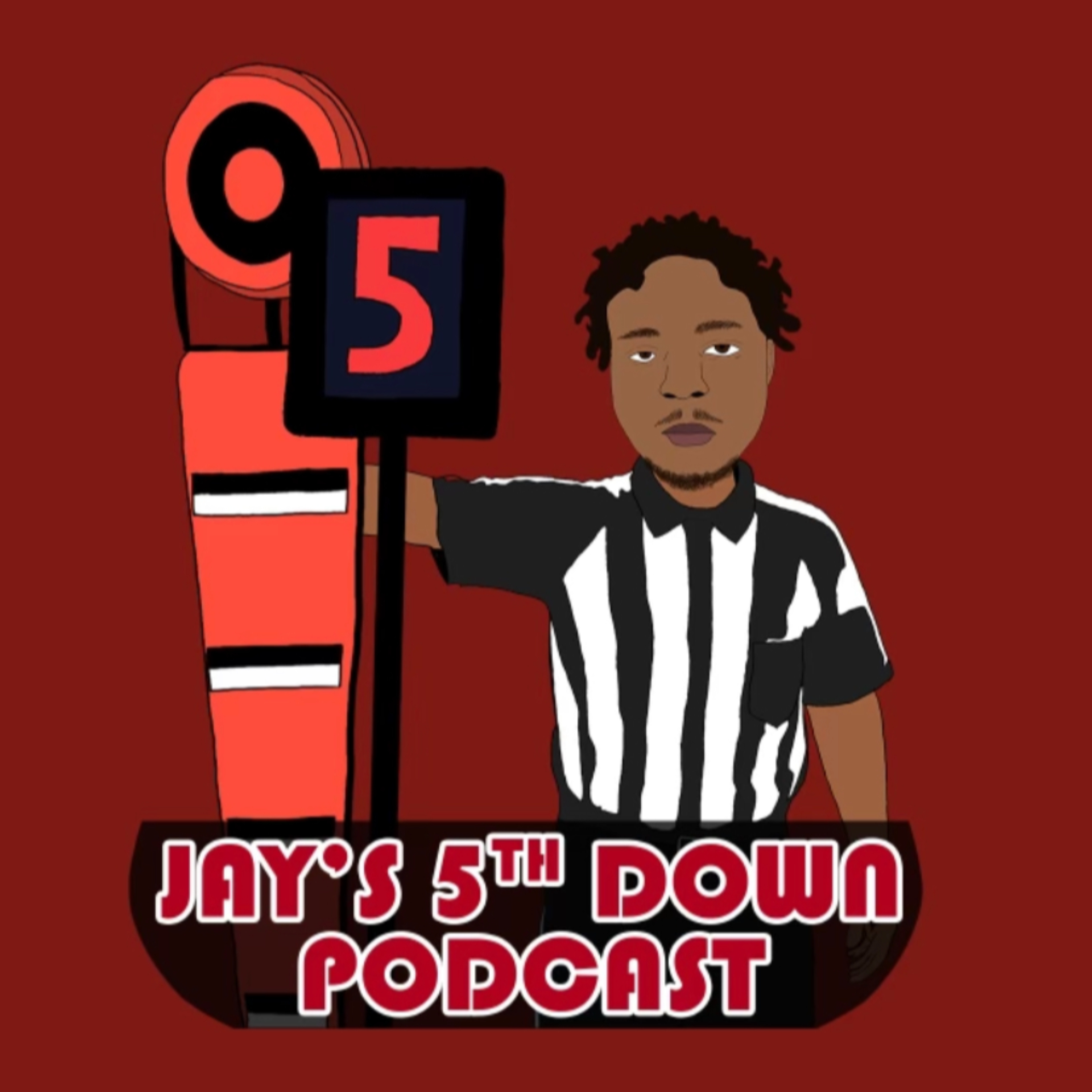 Jay’s 5th Down: A Football PodcastWhat Will Texans Do At #2?? Aaron Rodgers Finally A Jet with Cade Tjomsland!Today I spoke with Cade Tjomsland of the NFL Study Hall Podcast. He previews what Texans should do at pick 2 in the draft and why this class is so important for Houston to hit on! Plus Aaron Rodgers is finally a Jet!2023-04-2525 min
Jay’s 5th Down: A Football PodcastWhat Will Texans Do At #2?? Aaron Rodgers Finally A Jet with Cade Tjomsland!Today I spoke with Cade Tjomsland of the NFL Study Hall Podcast. He previews what Texans should do at pick 2 in the draft and why this class is so important for Houston to hit on! Plus Aaron Rodgers is finally a Jet!2023-04-2525 min